Arizona’s Sonoran Desert: Organ Pipe Cactus National Monument and Saguaro National Park
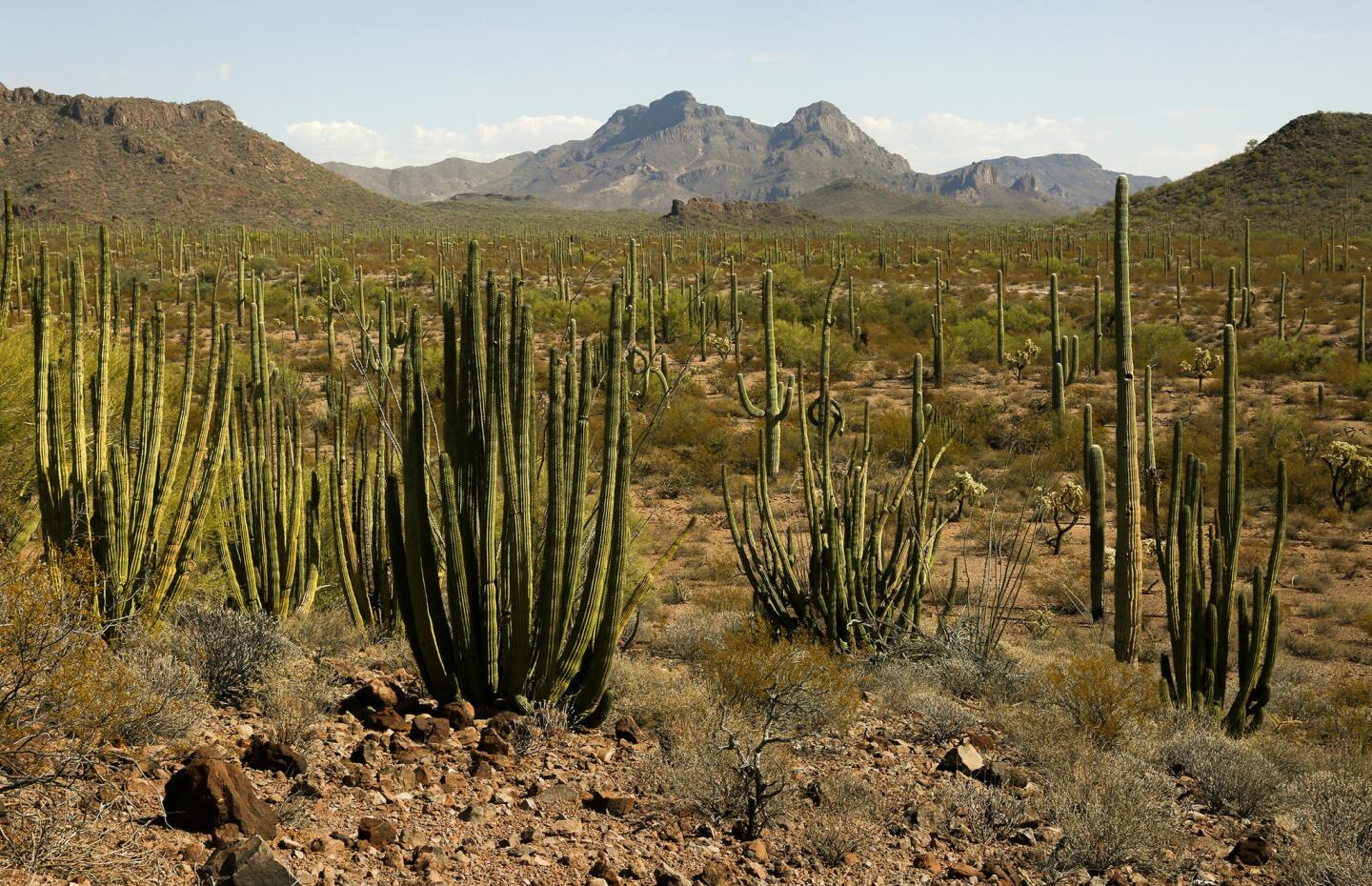
Organ Pipe Cactus National Monument lies in the heart of the Sonoran Desert and is bordered by Mexico, where U.S. Customs and Border Protection officers routinely patrol the roads and fences looking for smugglers and illegal immigration.
(Mark Boster / Los Angeles Times)The Sonoran Desert is said to be the most biodiverse desert in the world. A vast array of plants including its famous giant cacti, reptiles, birds and America’s only jaguar population, inhabit this harsh world. Read more >
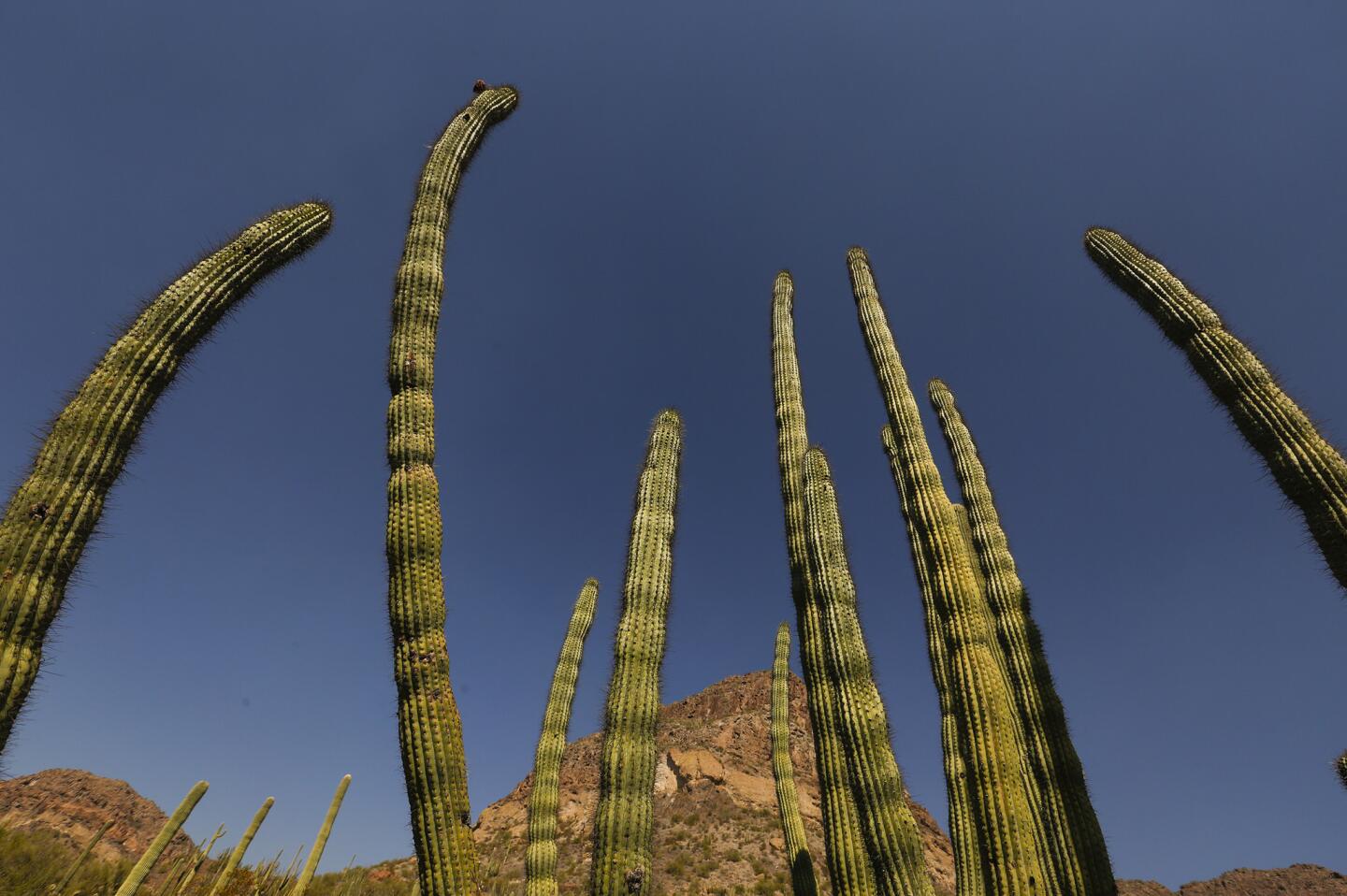
The park’s namesake cactuses, the organ pipes, stand up to 25 feet tall.
(Mark Boster / Los Angeles Times)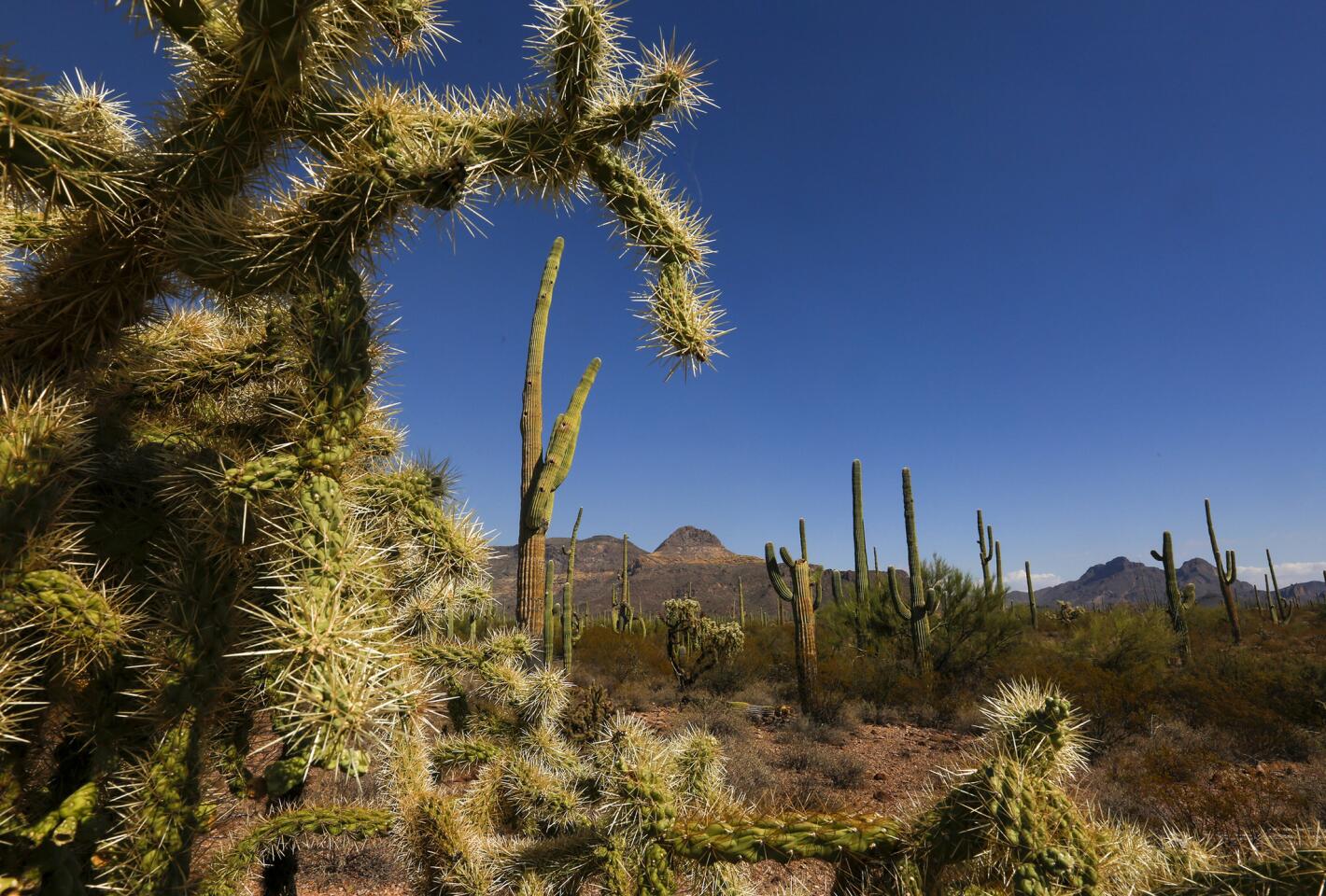
Cactuses frame cactuses in the Sonoran Desert.
(Mark Boster / Los Angeles Times)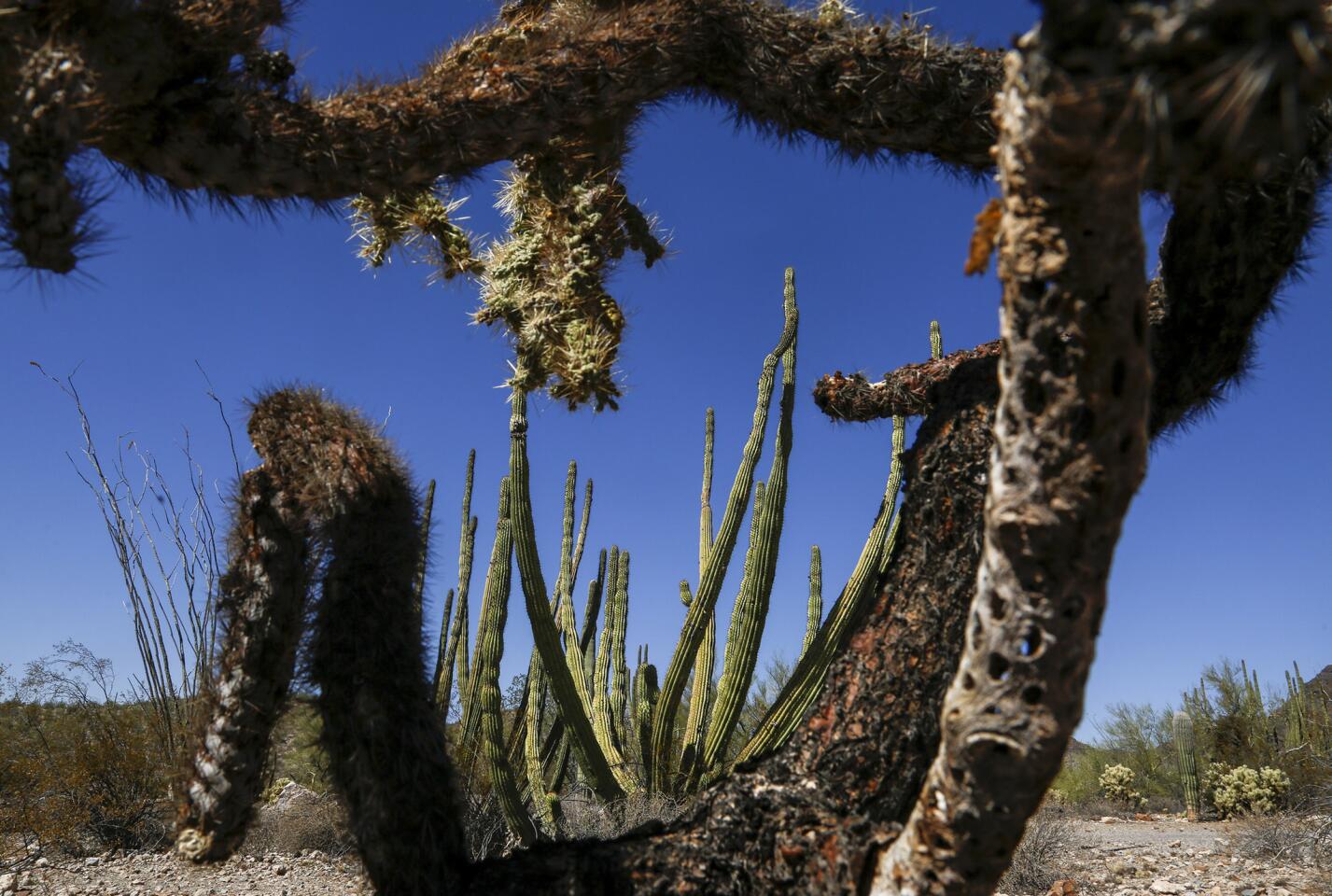
A dying cholla -- also known as jumping cactus -- with organ pipe cactuses in the background.
(Mark Boster / Los Angeles Times)Advertisement
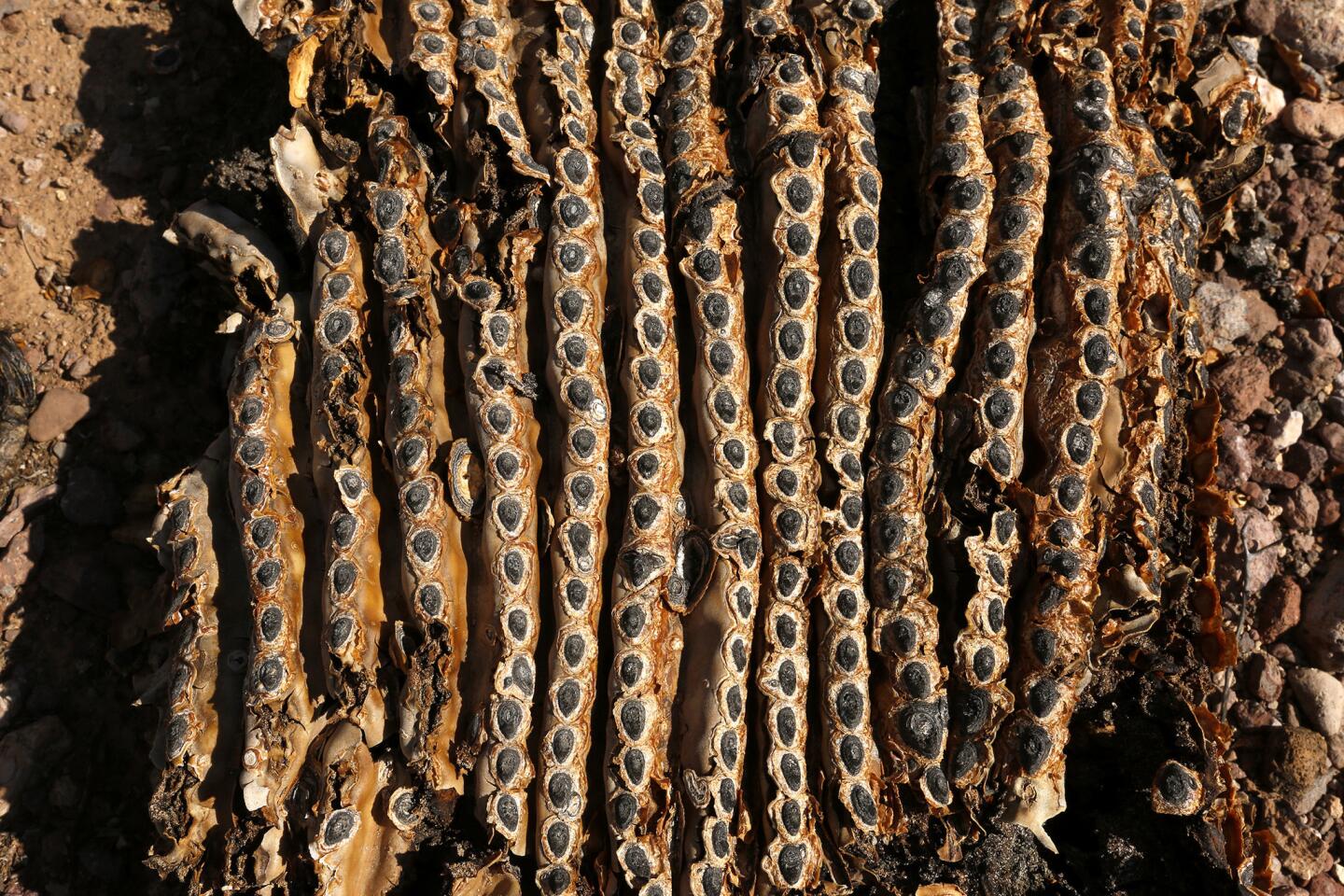
The outer waxy layer of a dead cactus looks like alligator skin.
(Mark Boster / Los Angeles Times)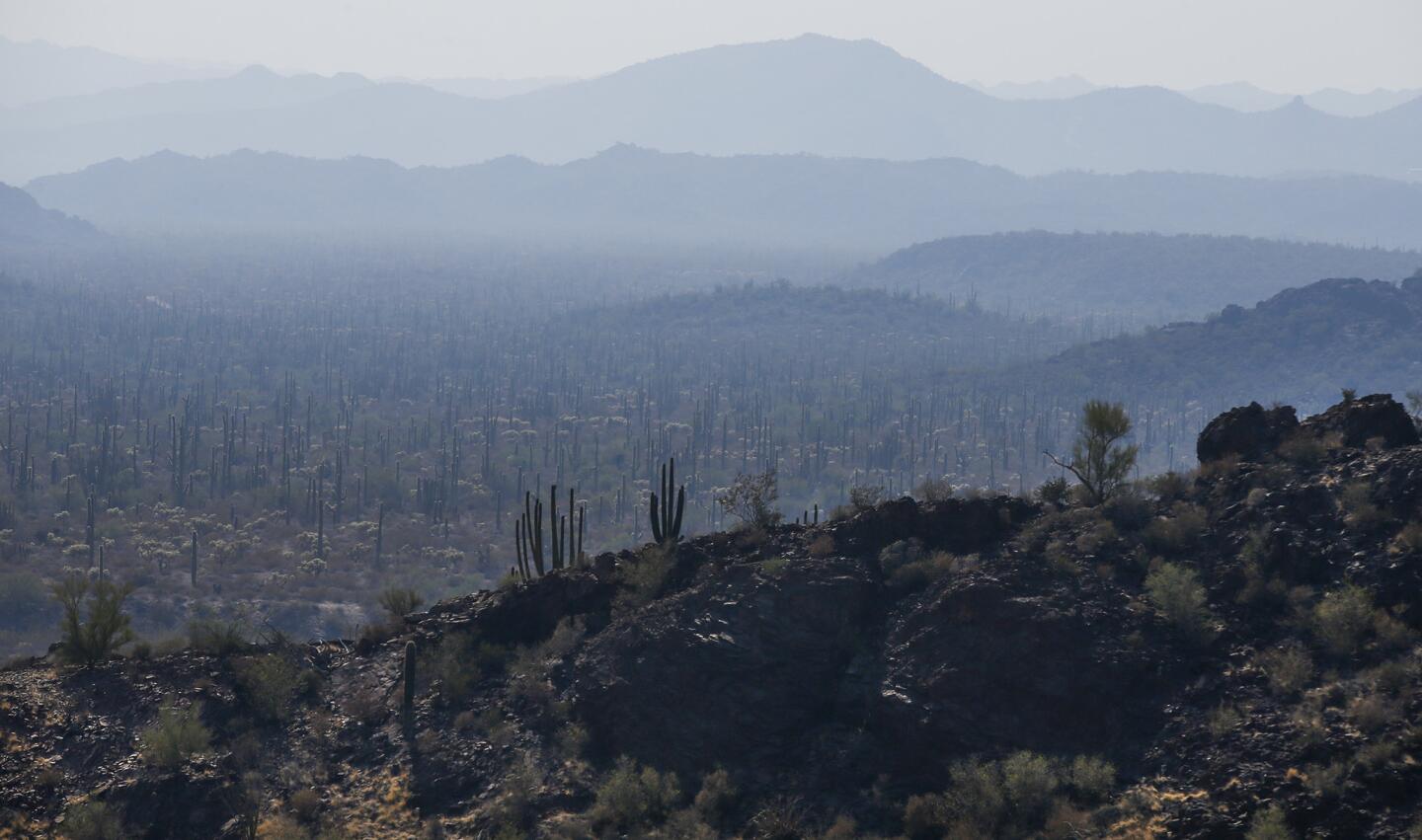
A view of the desert inside Organ Pipe Cactus National Monument.
(Mark Boster / Los Angeles Times)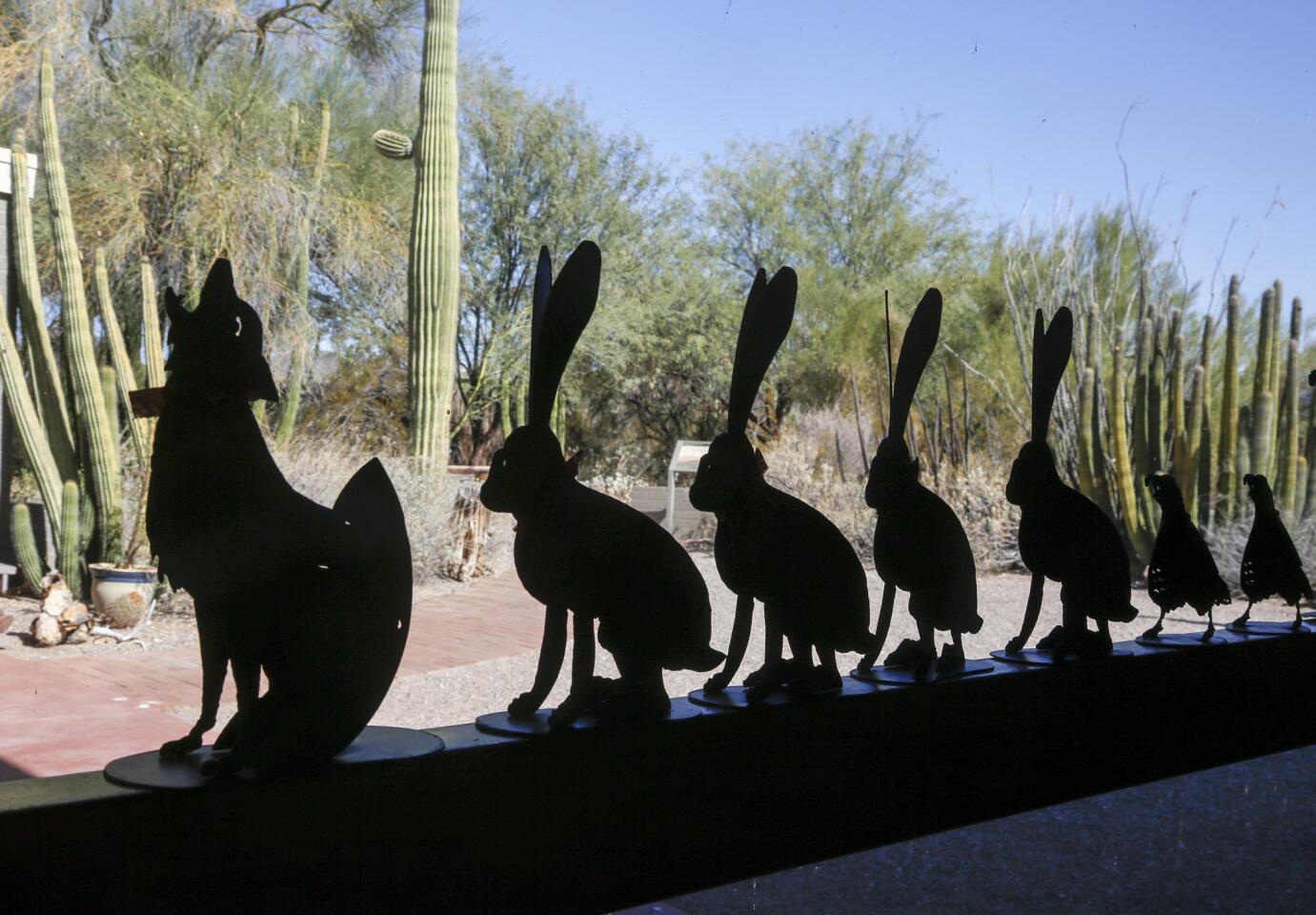
Little metal sculptures of desert animals line the windows at the Organ Pipe Cactus Monument Visitor Center near Ajo, Ariz.
(Mark Boster / Los Angeles Times)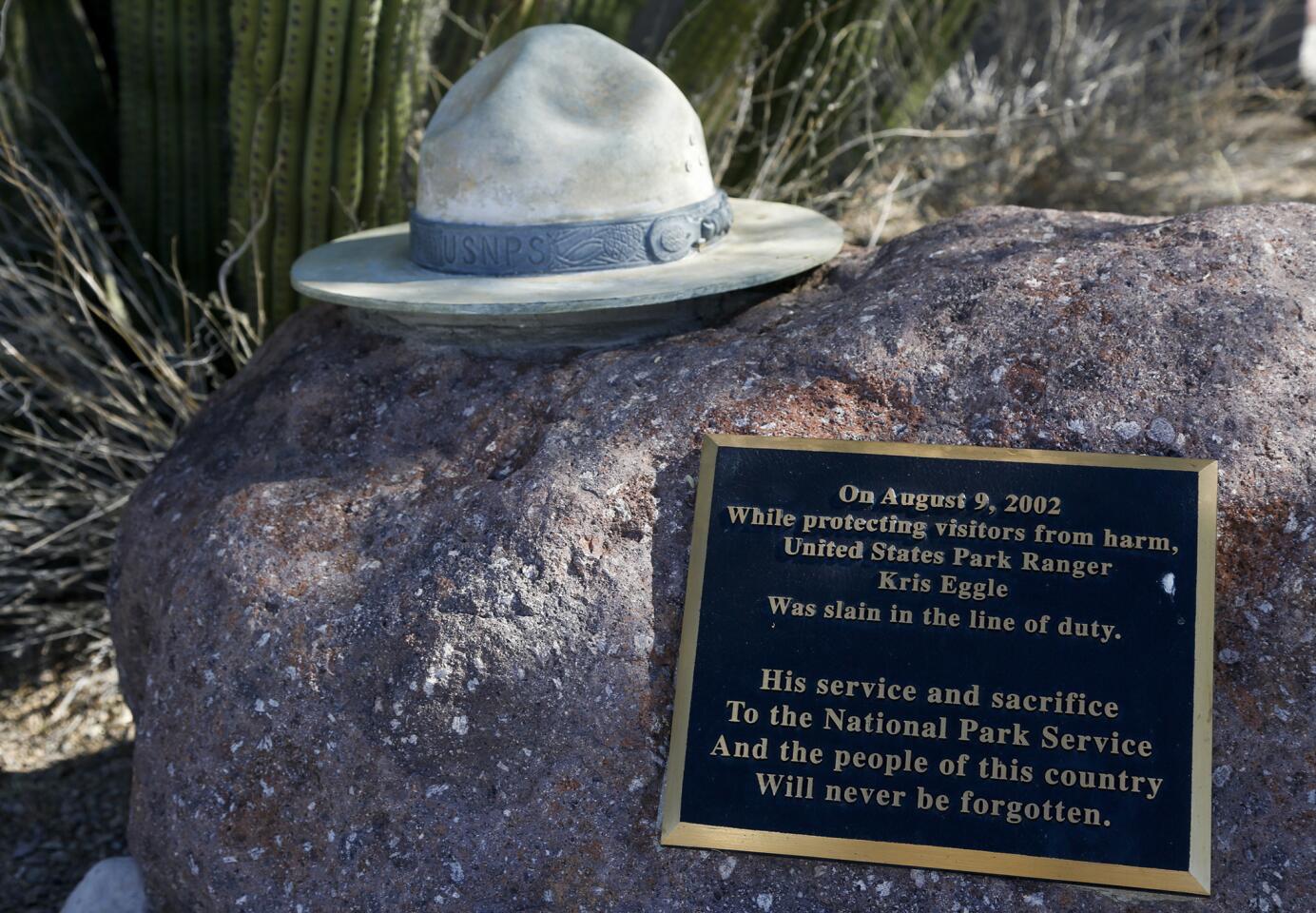
A stone hat and plaque memorialize Park Ranger Kris Eggle, who was killed while chasing drug smugglers in 2002. Eggle’s death earned the park a reputation as one of the most dangerous national parks in the country.
(Mark Boster / Los Angeles Times)Advertisement
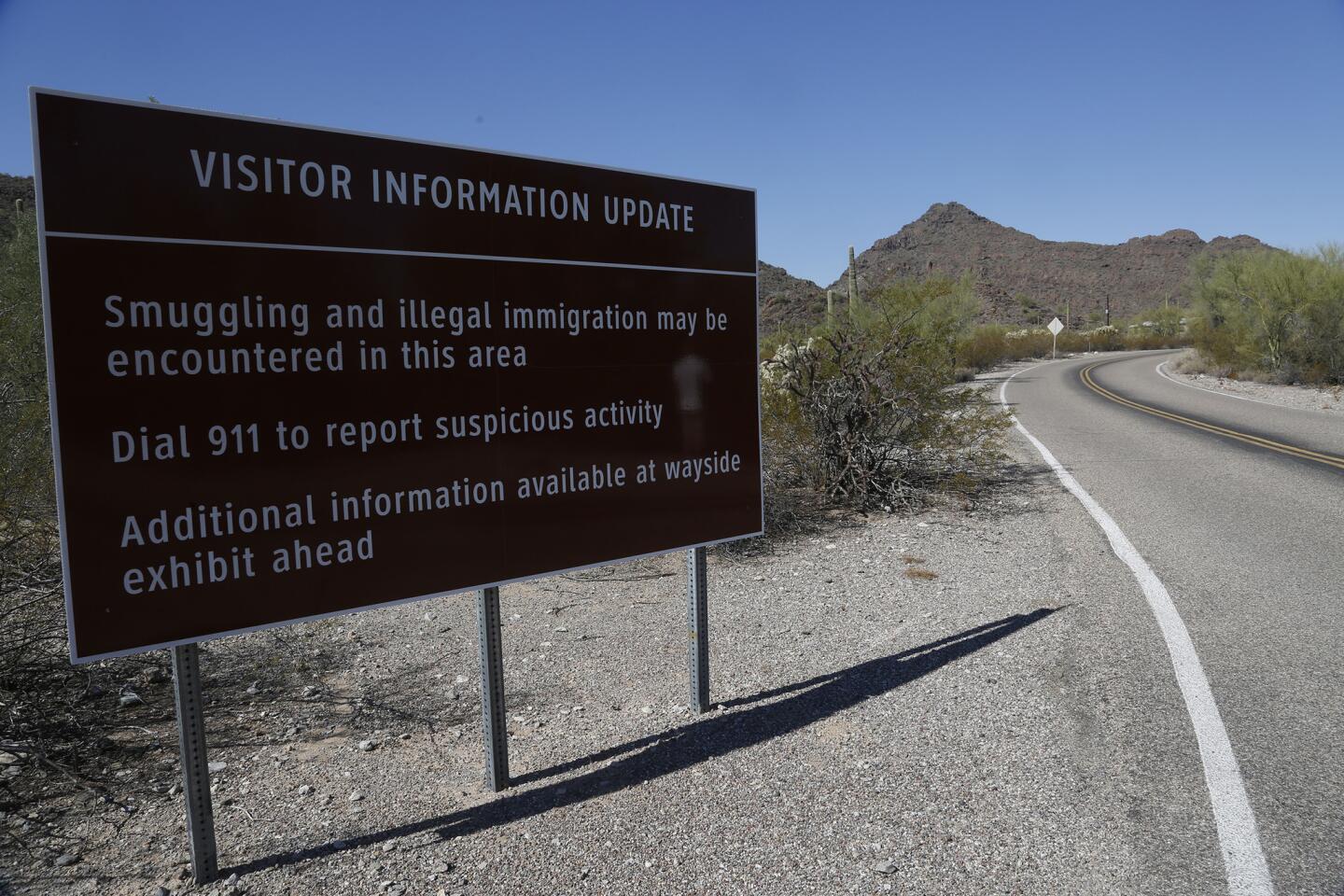
A sign warns visitors about possible dangers inside the park. After Eggle’s death, the park ramped up enforcement, and now the park seems to be a safe place to observe the cactus and wildlife.
(Mark Boster / Los Angeles Times)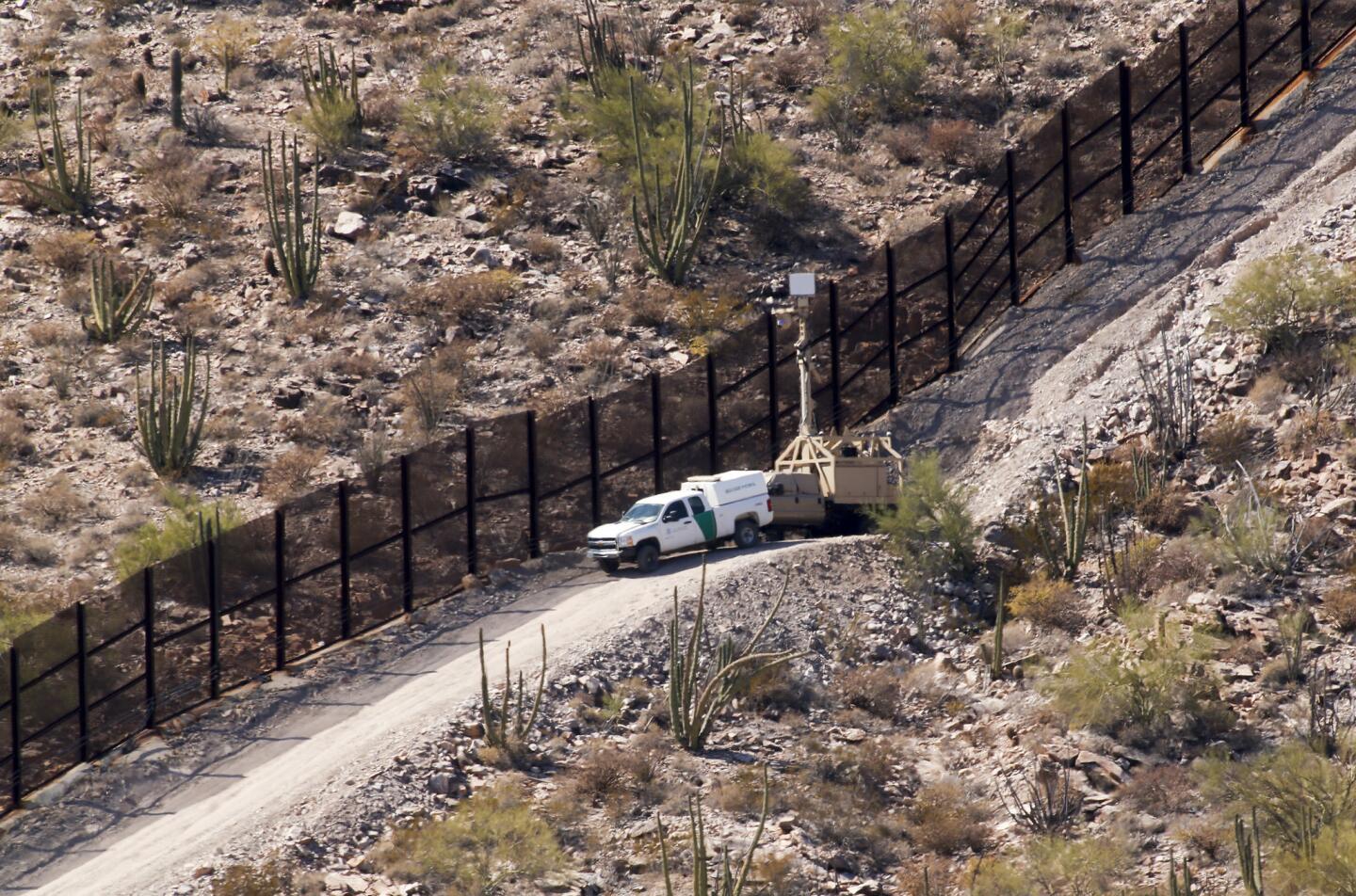
U.S. Customs and Border Protection vehicles man the metal border fence with trucks, cameras and regular patrols in the park.
(Mark Boster / Los Angeles Times)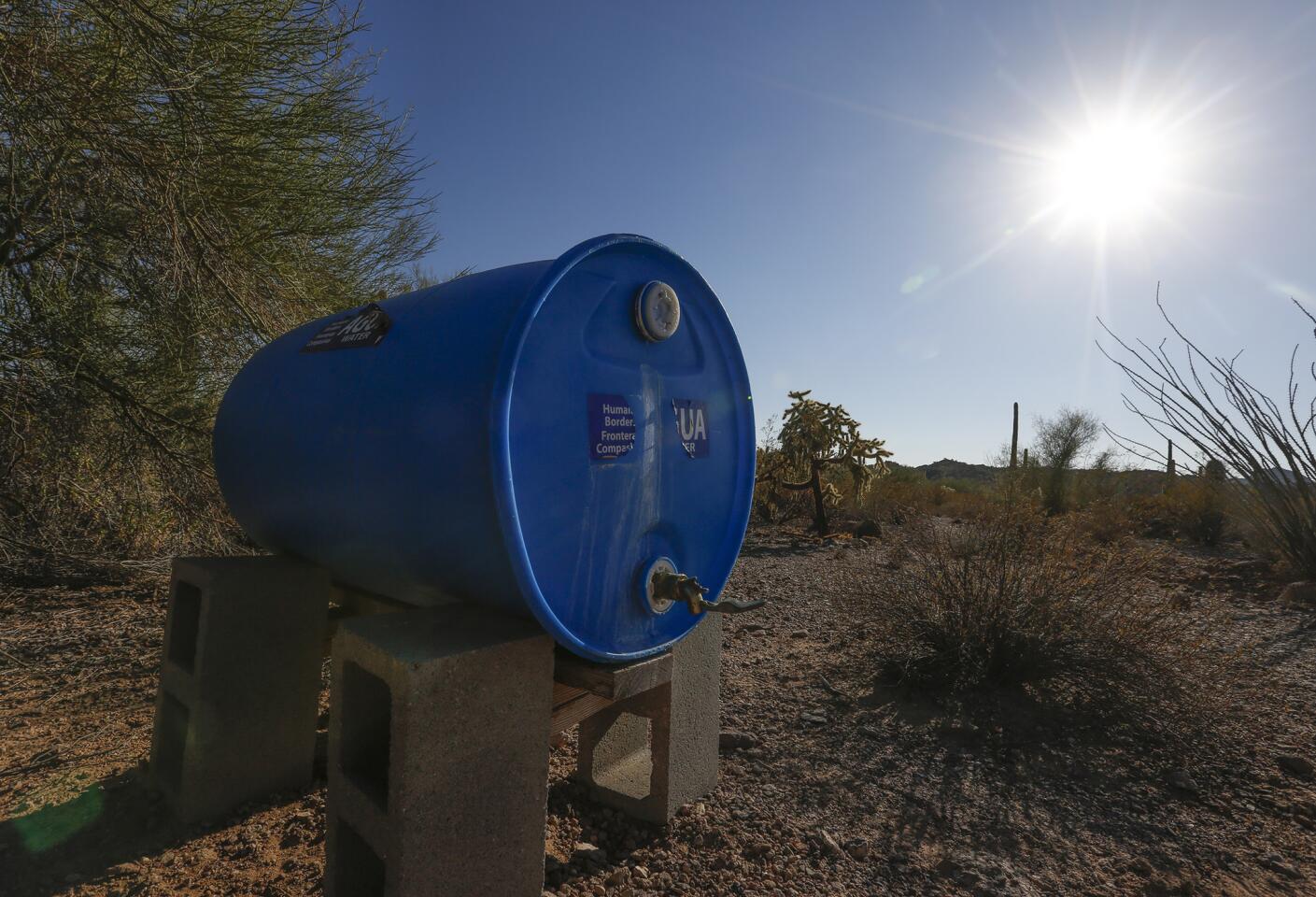
Humanitarian groups have placed blue tanks of water to aid immigrants crossing the desert in Organ Pipe National Monument.
(Mark Boster / Los Angeles Times)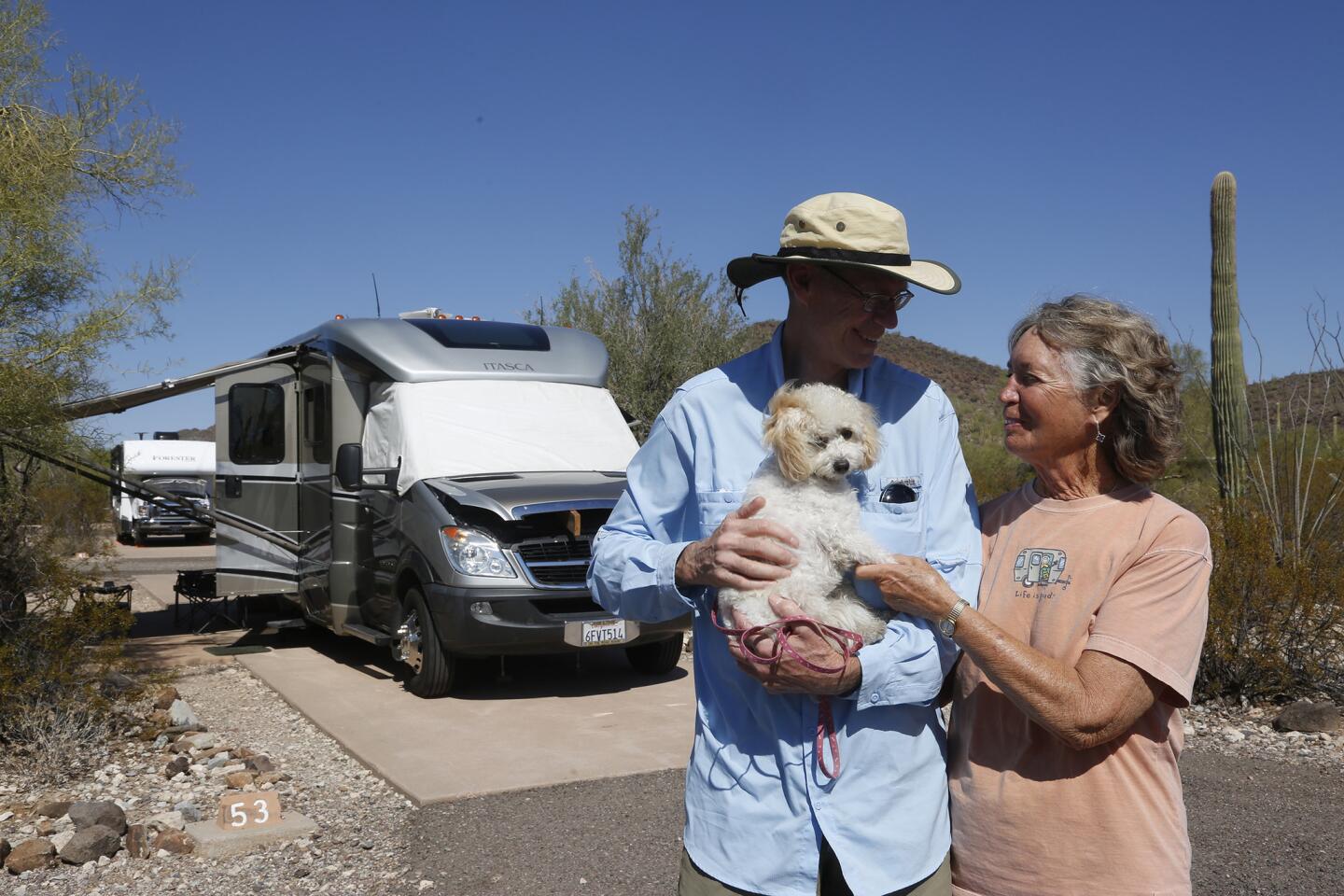
San Diego residents Frank Yancey and Barbara Deese stand with their dog Sophie at a campground in the park.
(Mark Boster / Los Angeles Times)Advertisement
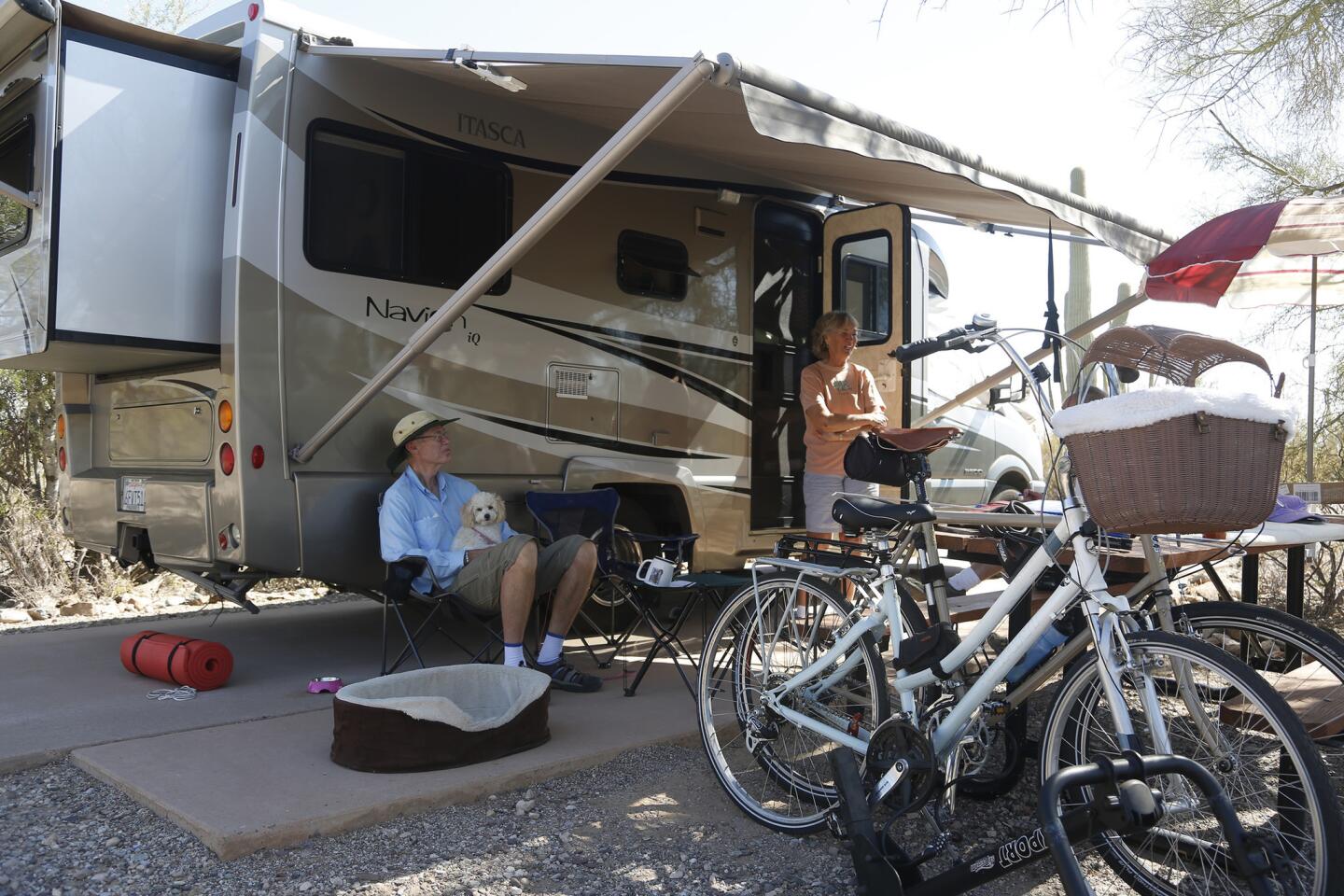
“This park is gorgeous and has some of the best facilities around,” said Frank Yancey, a retired school teacher. “When we first came a lot of the roads were closed, but we have never had any problems.”
(Mark Boster / Los Angeles Times)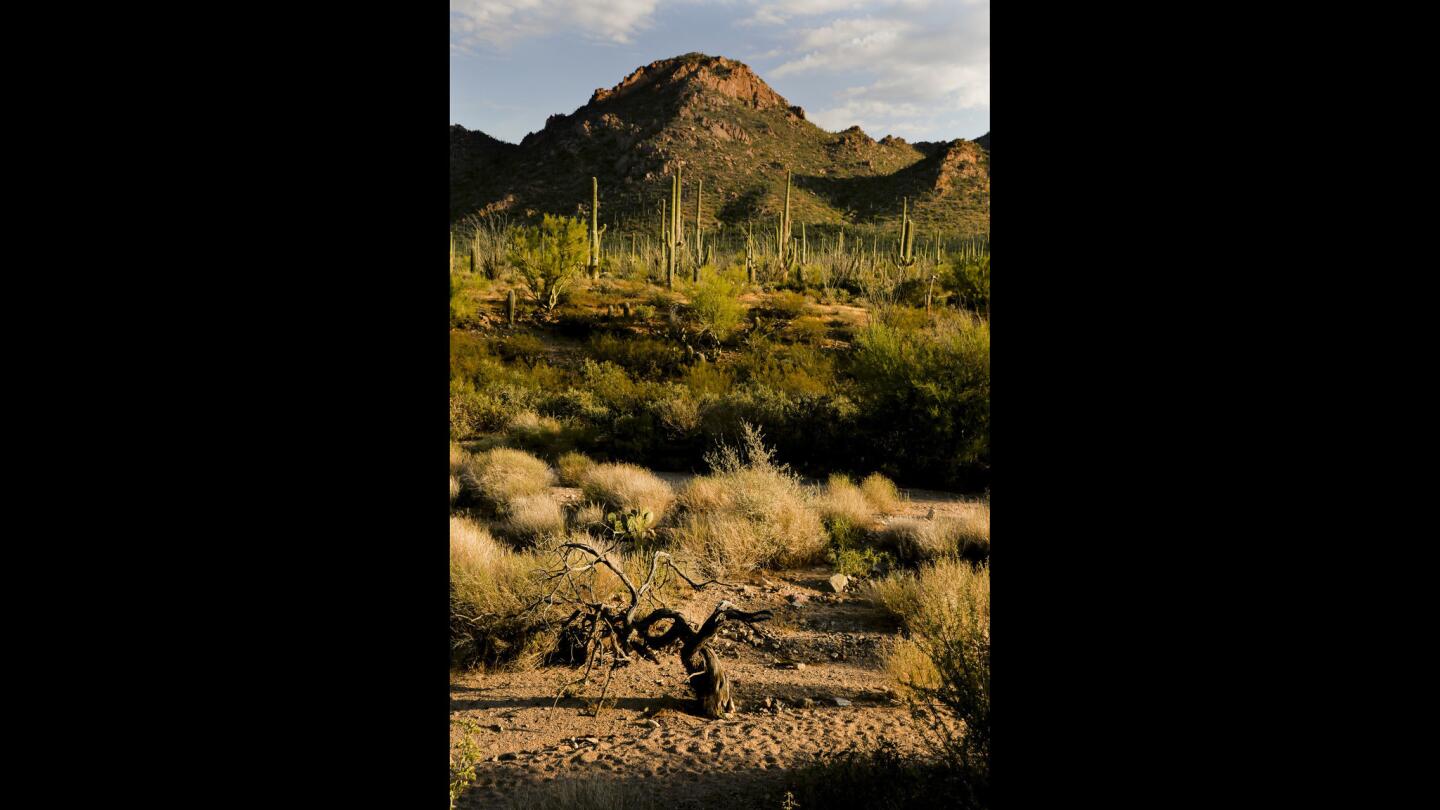
On the outskirts of Tucson, Saguaro National Park comes to life shortly after sunrise with the park’s namesake cactuses reaching for the skies.
(Mark Boster / Los Angeles Times)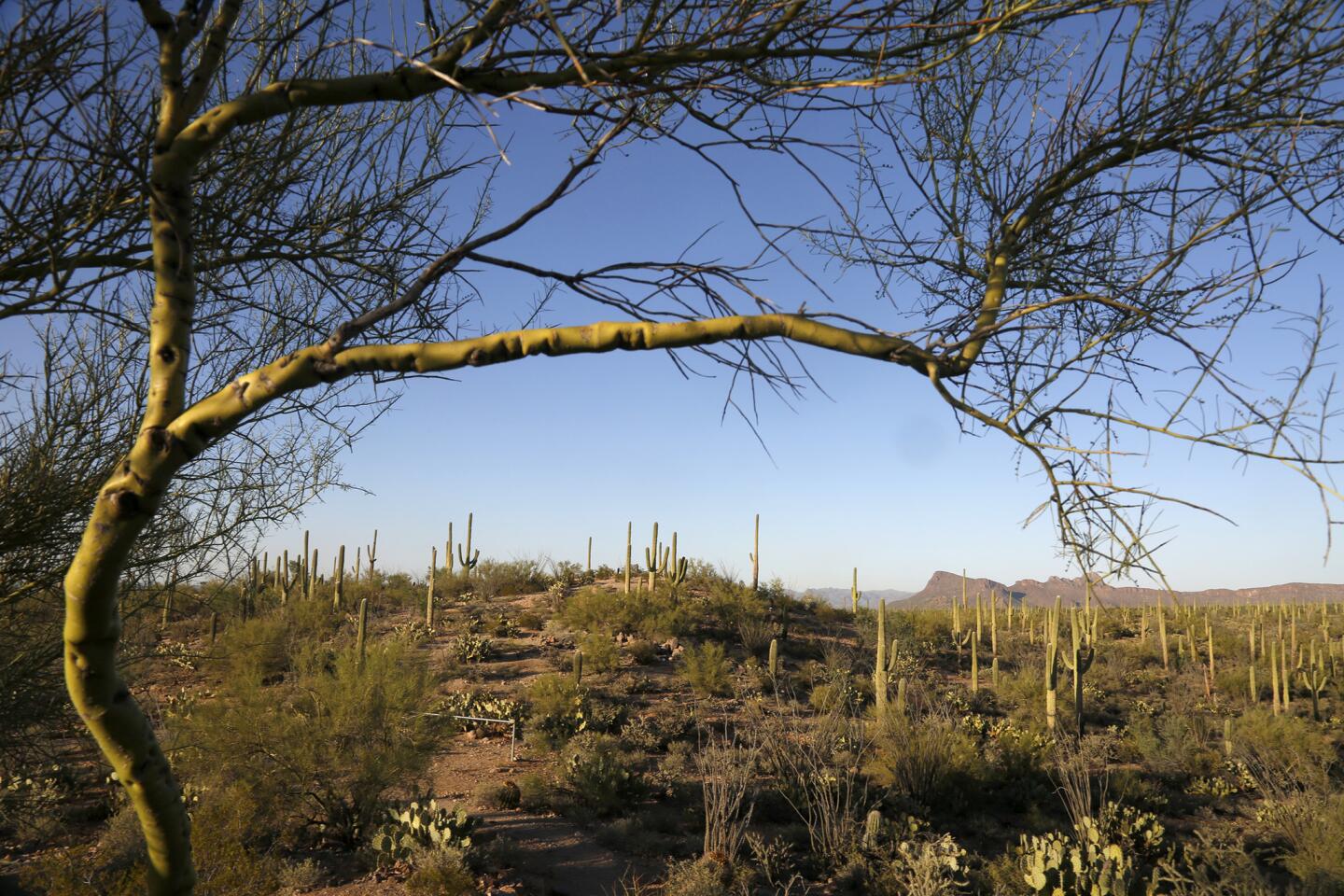
A grove of saguaro cactuses. The Sonoran Desert is one of the hottest and driest regions on the continent, yet plants and animals are able to survive through special adaptations.
(Mark Boster / Los Angeles Times)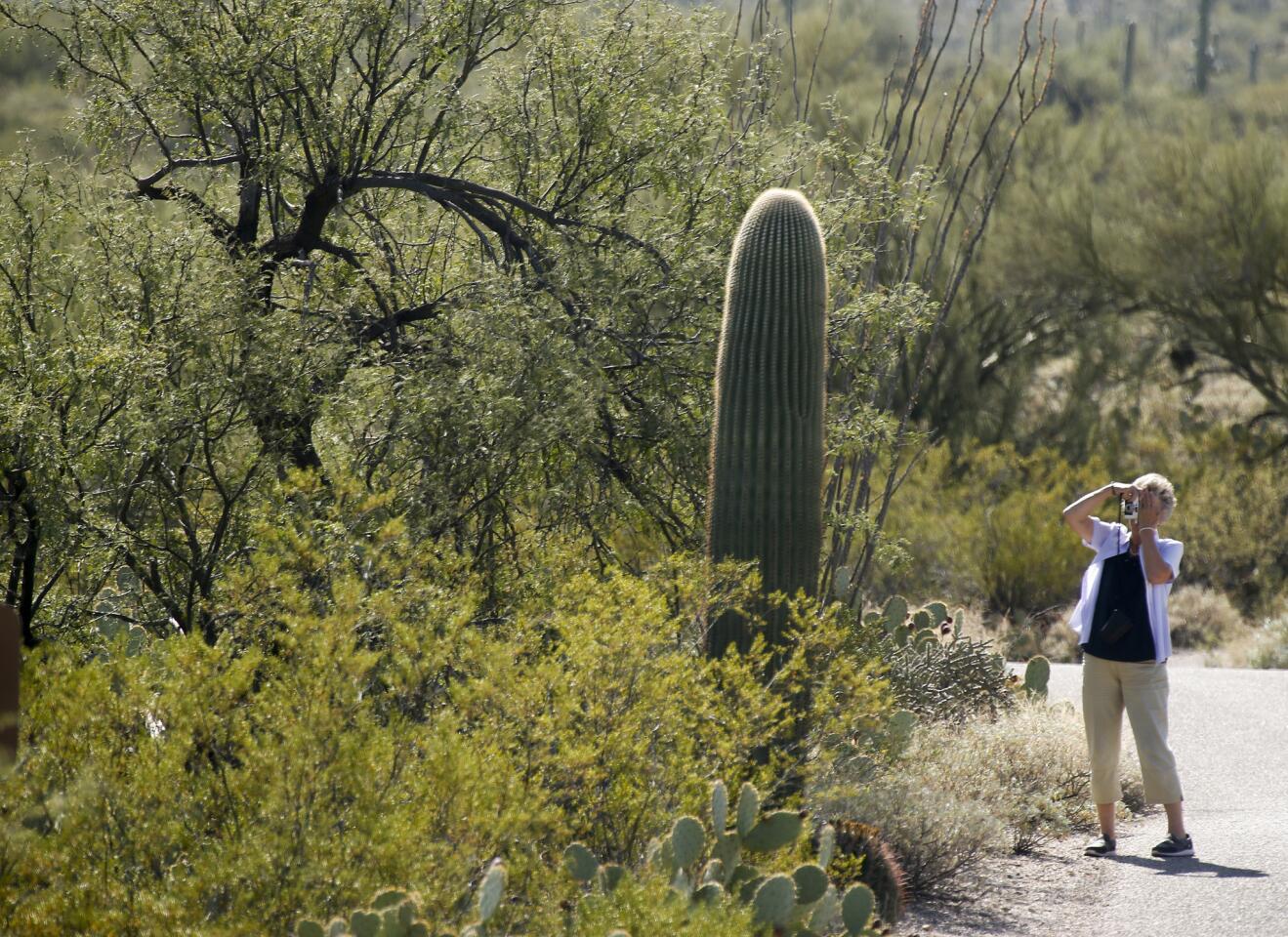
A visitor snaps a picture of a young saguaro cactus. The young succulents live for years under a tree or bush, protected from the heat and sun until they reach maturity.
(Mark Boster / Los Angeles Times)Advertisement
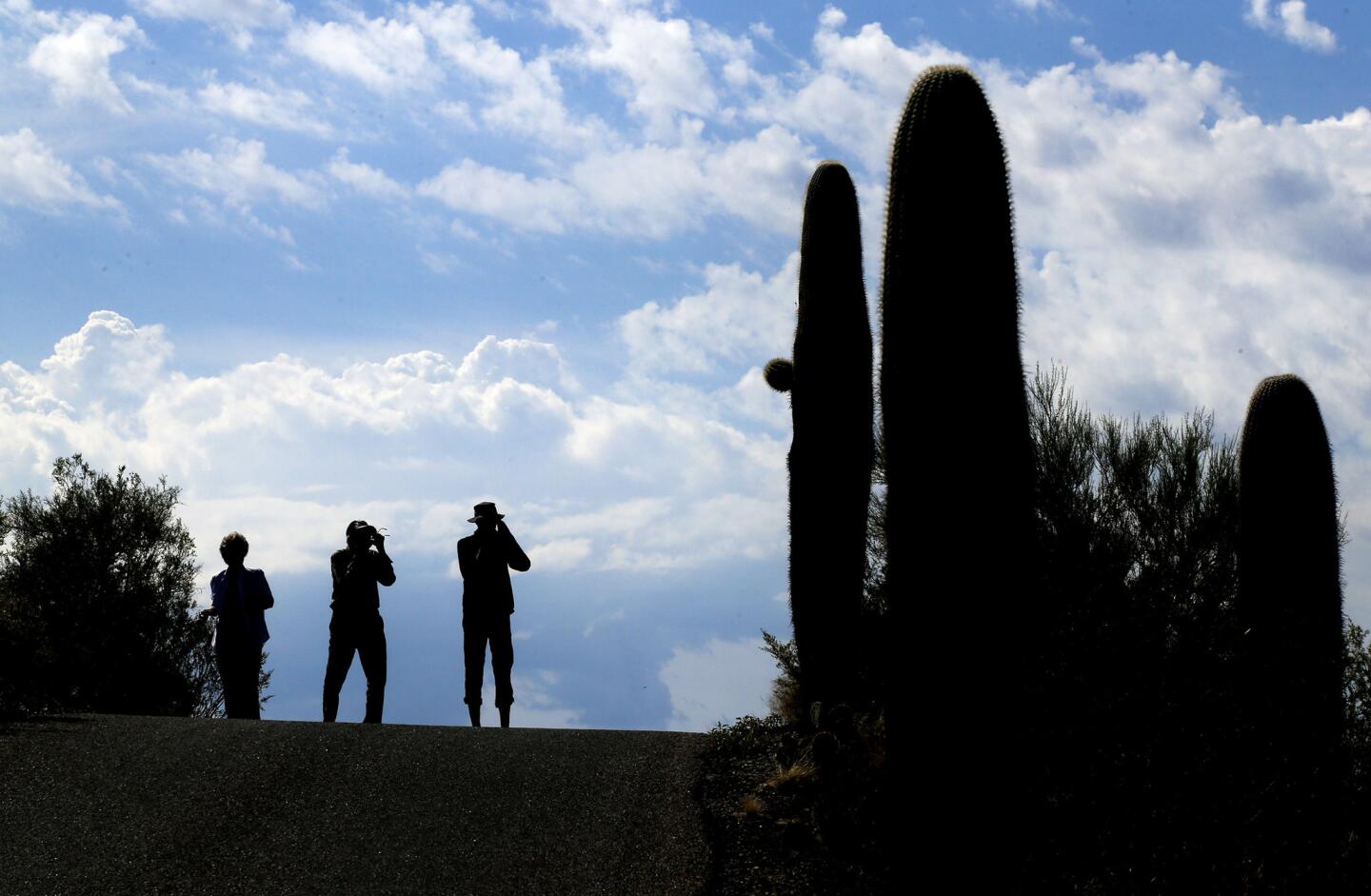
Visitors snap pictures of the iconic cactuses along Cactus Forest Drive in Saguaro National Park.
(Mark Boster / Los Angeles Times)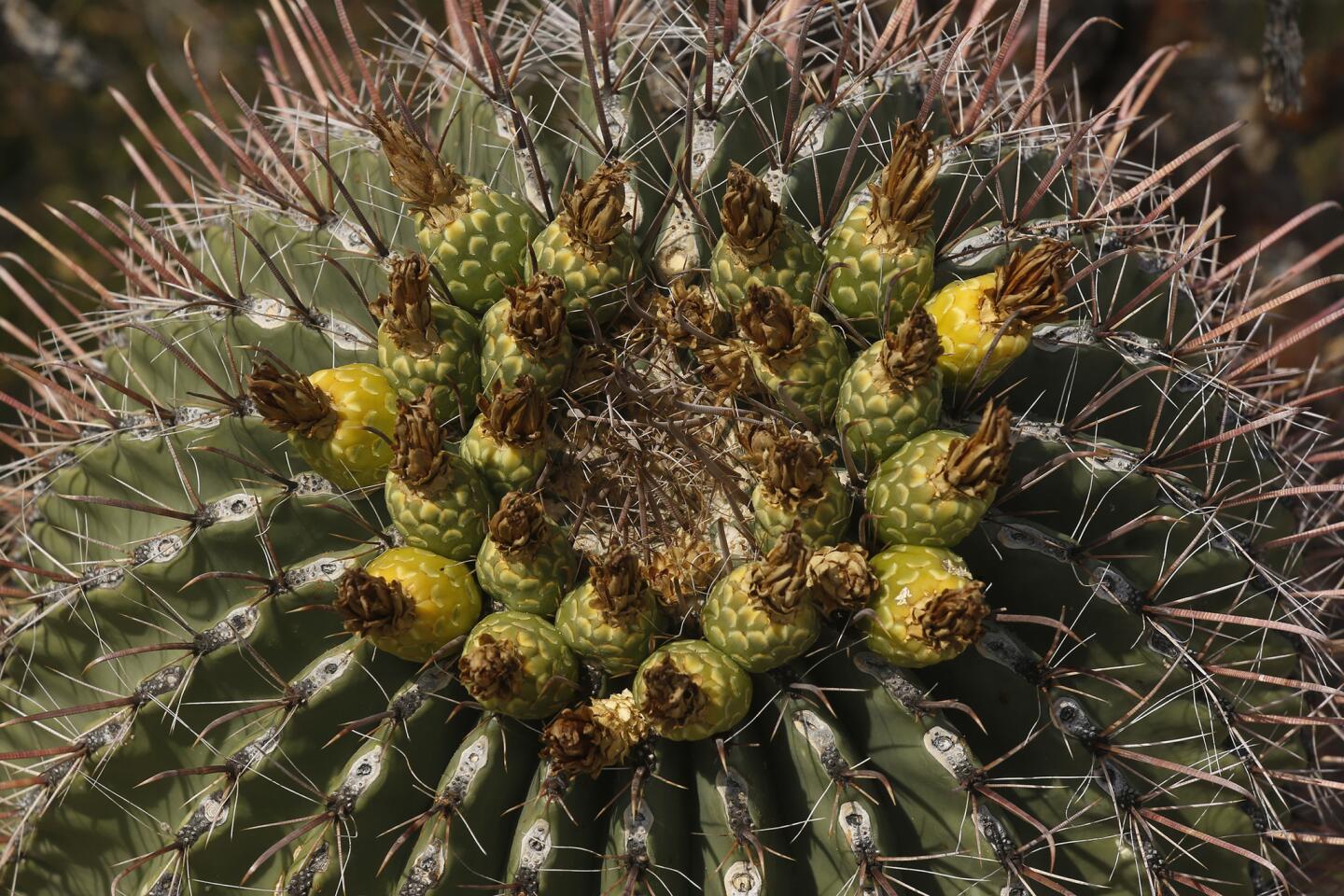
A closeup of a cactus along Cactus Forest Drive.
(Mark Boster / Los Angeles Times)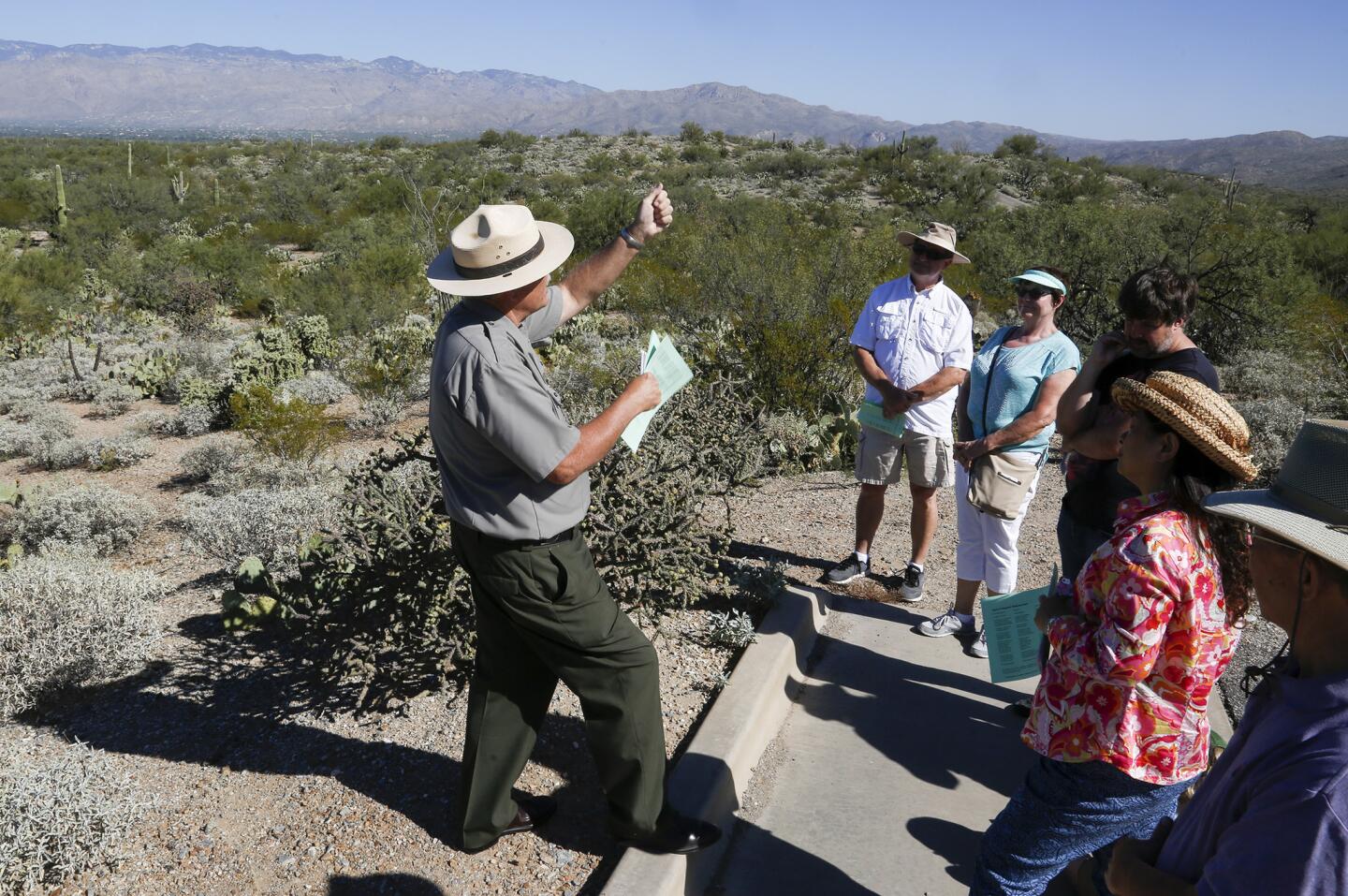
Ranger Jeff Wallner leads a nature talk with a group of visitors off Cactus Forest Drive in Saguaro National Park.
(Mark Boster / Los Angeles Times)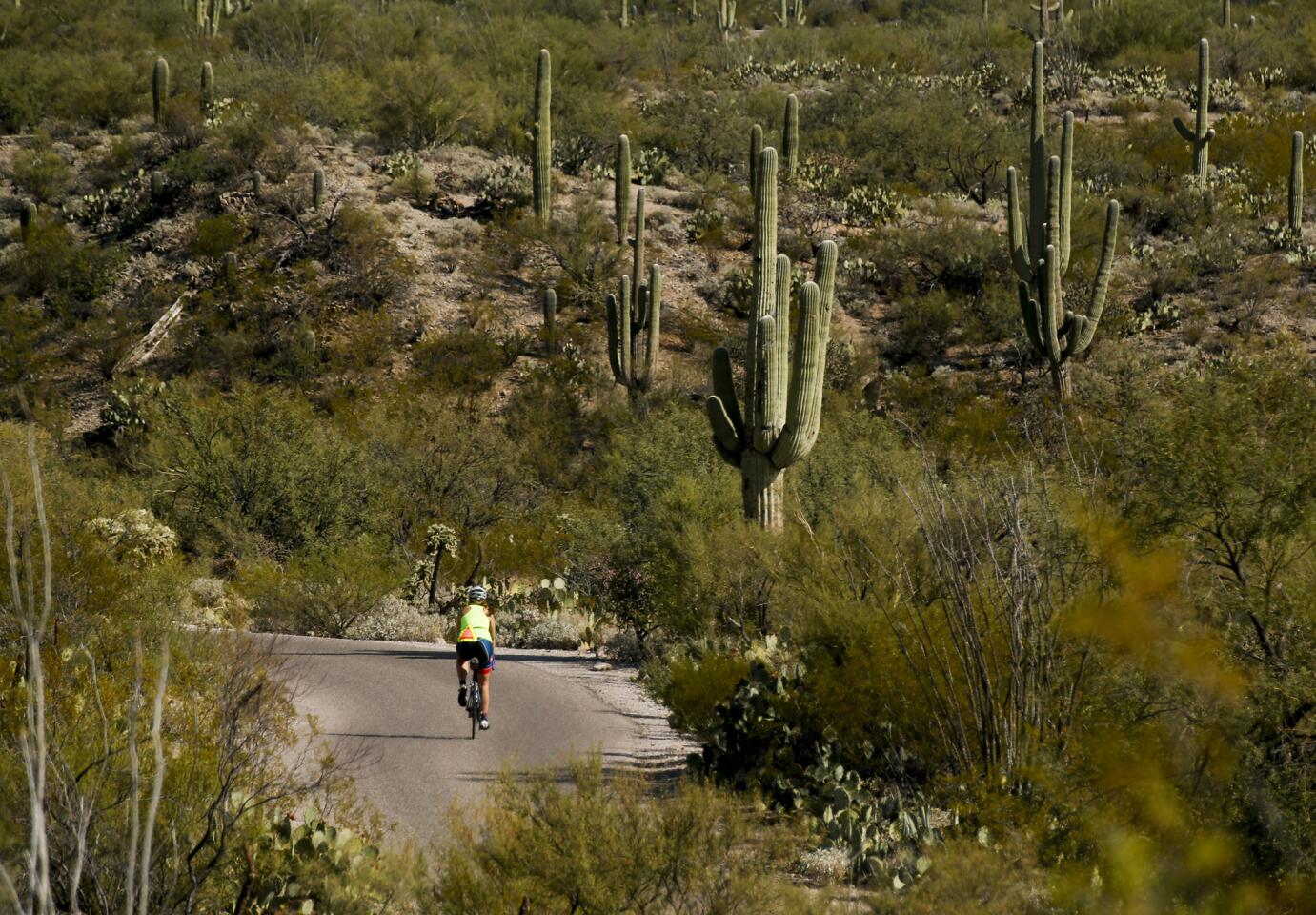
A bicyclist zooms past lush desert plants and cactuses on Cactus Forest Drive in Saguaro.
(Mark Boster / Los Angeles Times)Advertisement
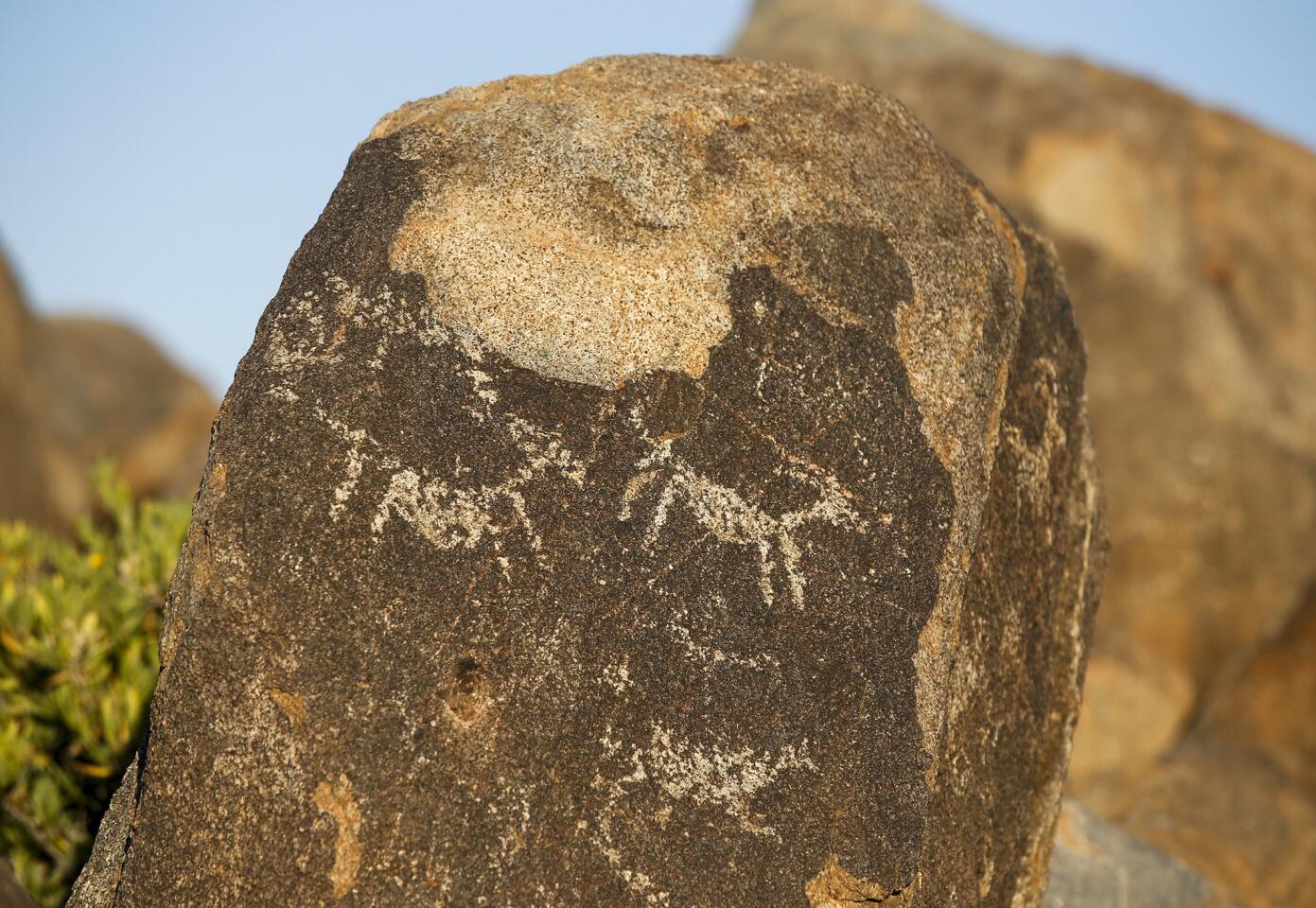
After a short hike (.3 mile) and a scramble over some rocks, the Signal Hill Trail leads to ancient petroglyphs datng back more than 800 years in Saguaro National Park near Tucson.
(Mark Boster / Los Angeles Times)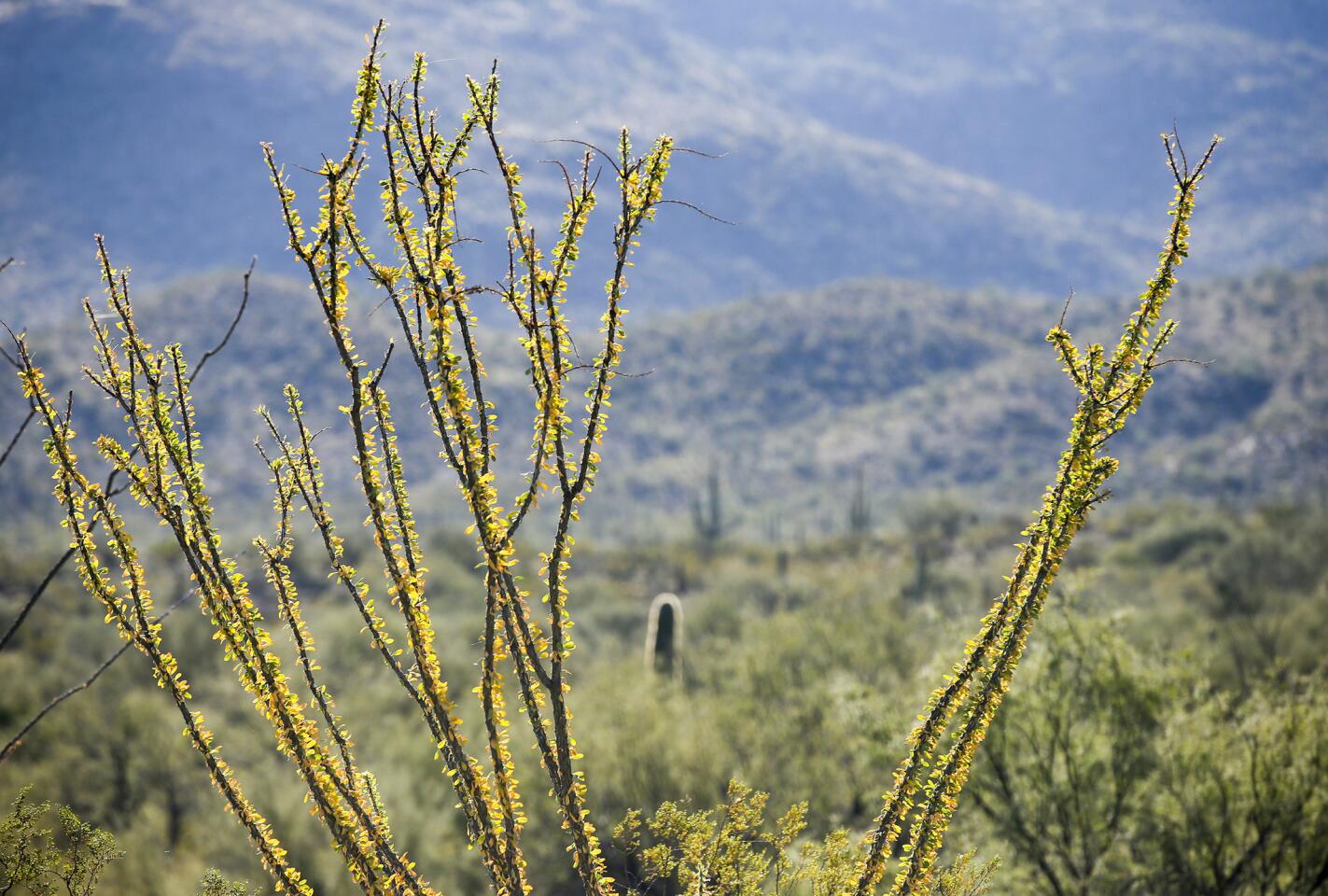
An ocotillo reaches for the sun on Cactus Forest Drive.
(Mark Boster / Los Angeles Times)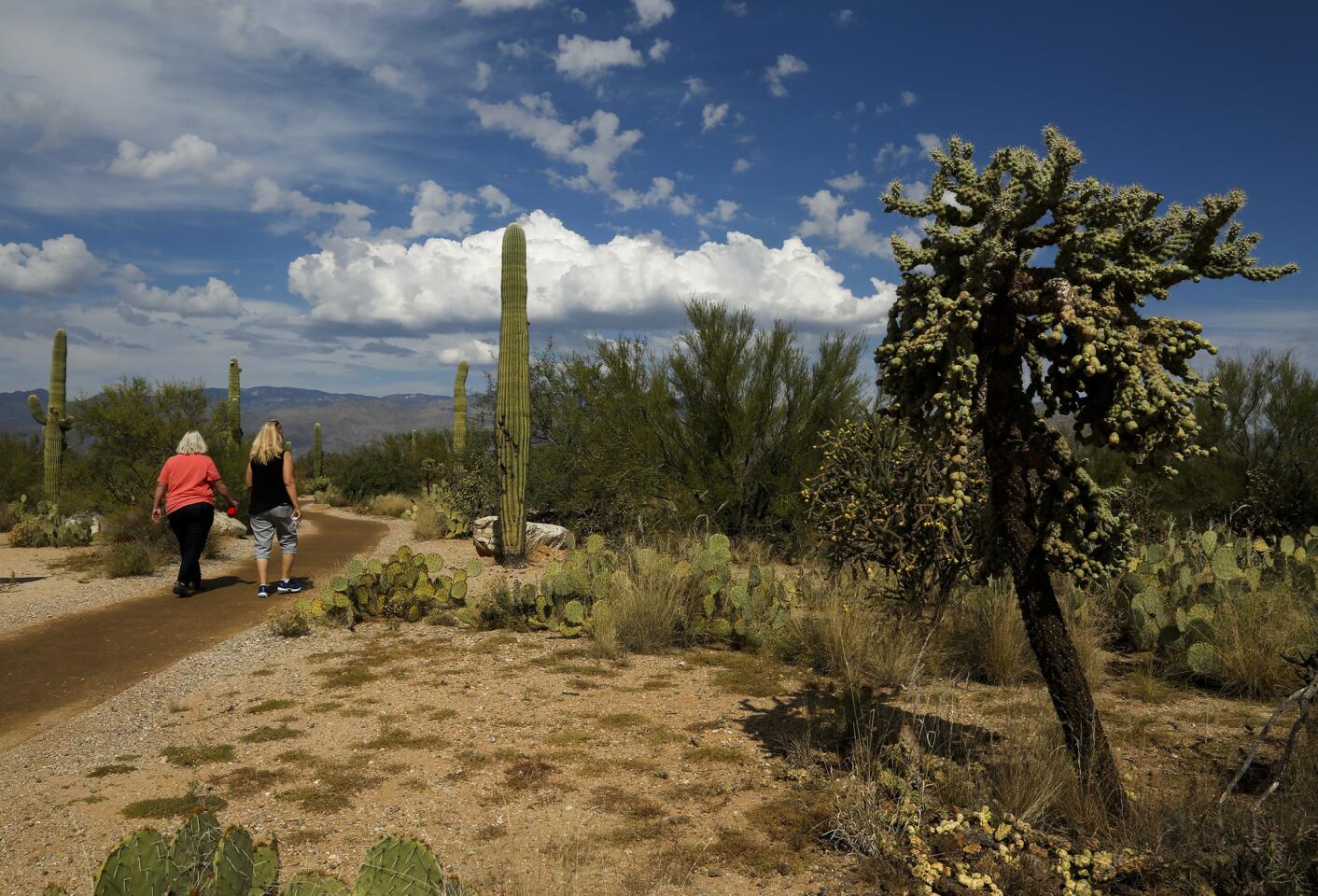
Visitors walk down the newly improved Mica View Trail in Saguaro.
(Mark Boster / Los Angeles Times)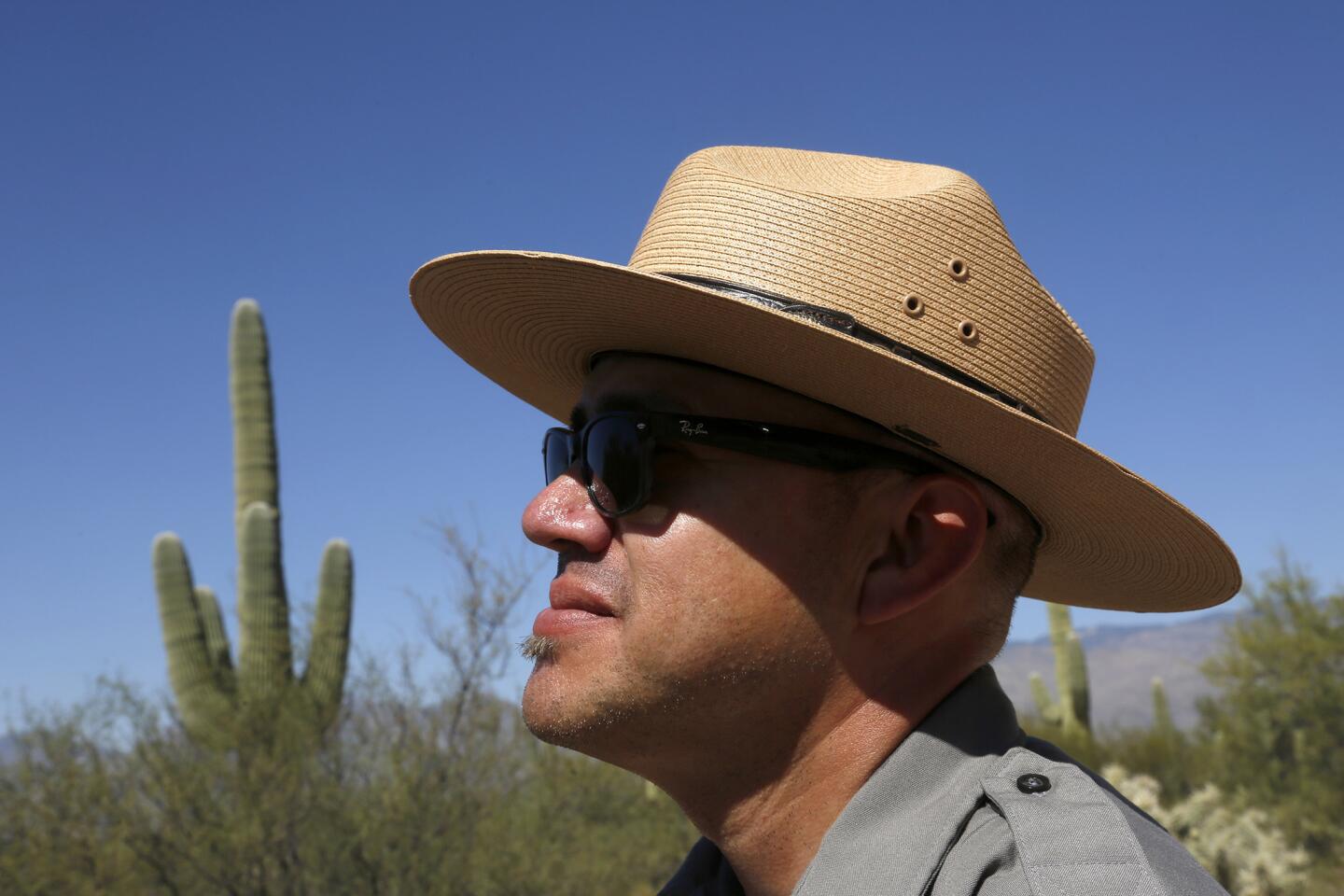
Park ranger Cam Juarez on Mica View Trail.
(Mark Boster / Los Angeles Times)Advertisement
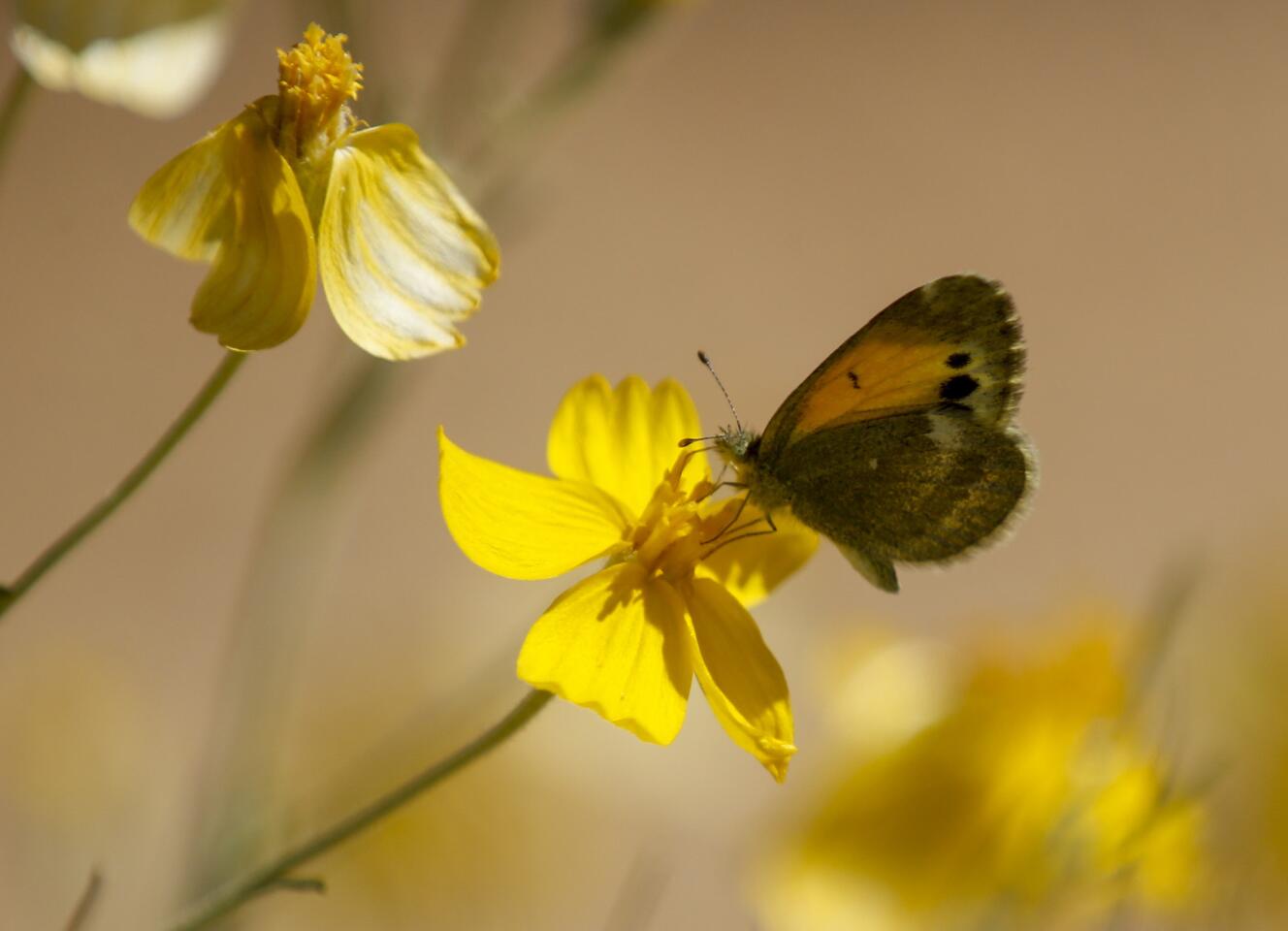
A butterfly lands on a flower along the Mica View trail.
(Mark Boster / Los Angeles Times)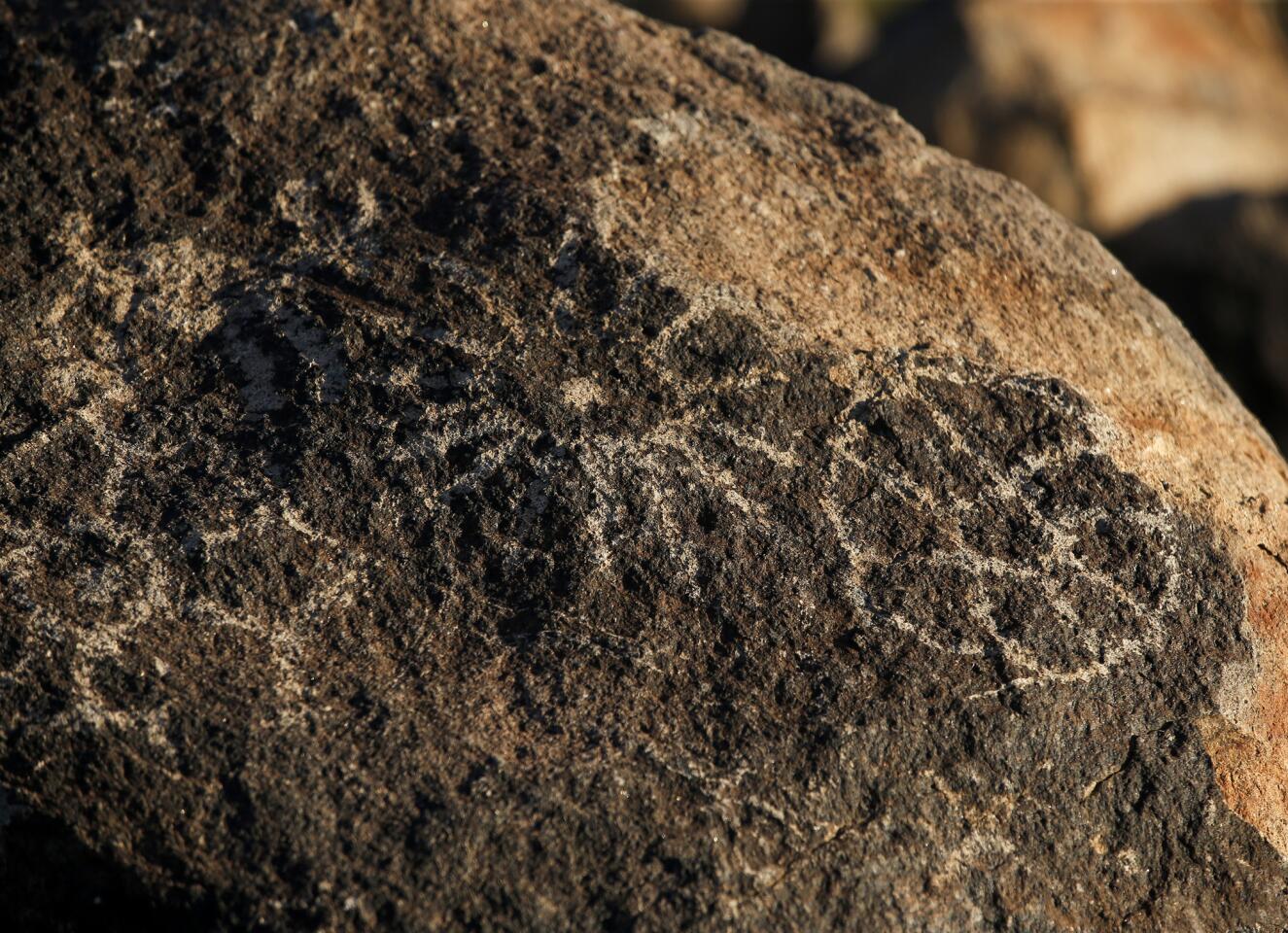
After a short hike (.3 miles) and a scramble over some rocks, the Signal Hill Trail leads to ancient petroglyphs dating back more than 800 years.
(Mark Boster / Los Angeles Times)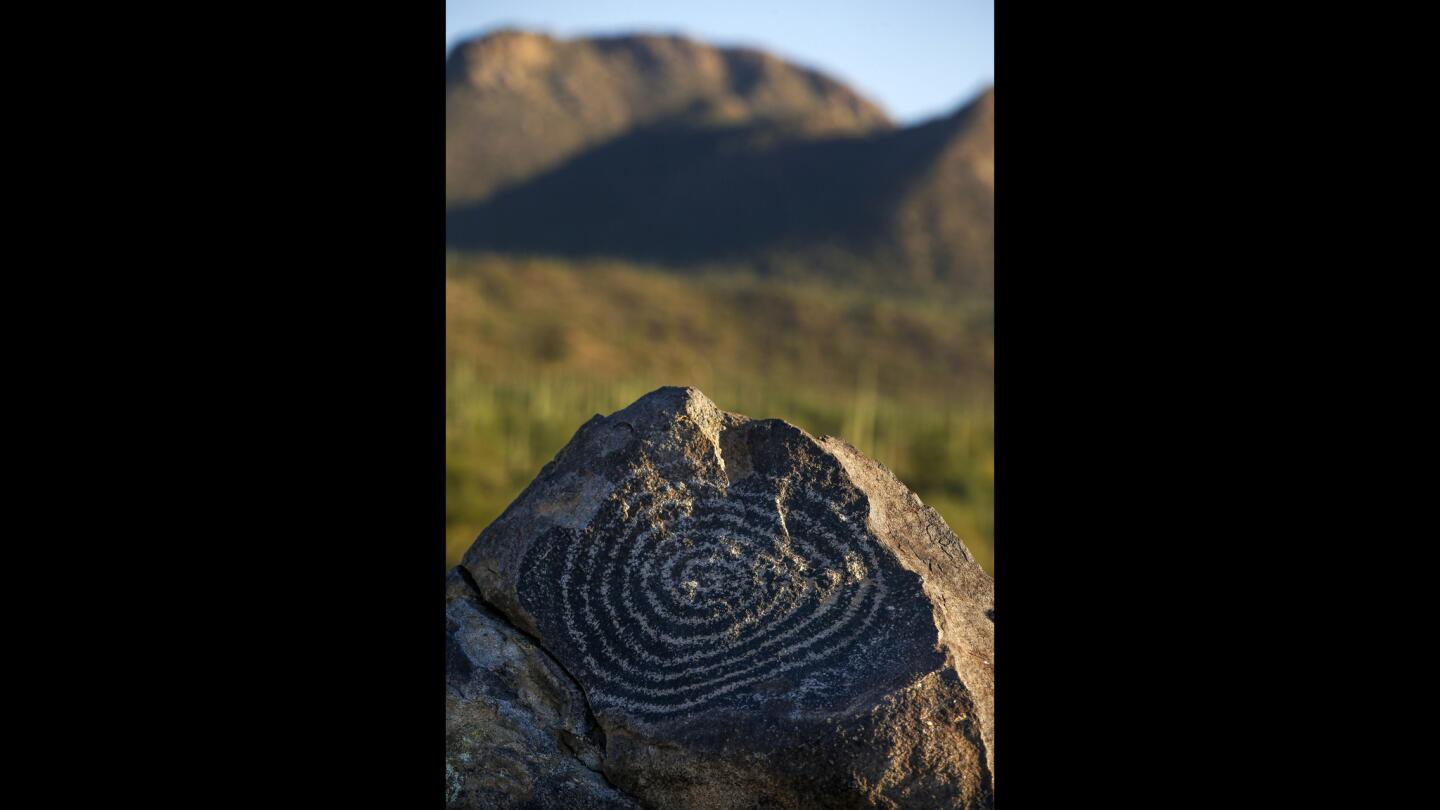
Petroglyphs off Signal Hill Trail.
(Mark Boster / Los Angeles Times)
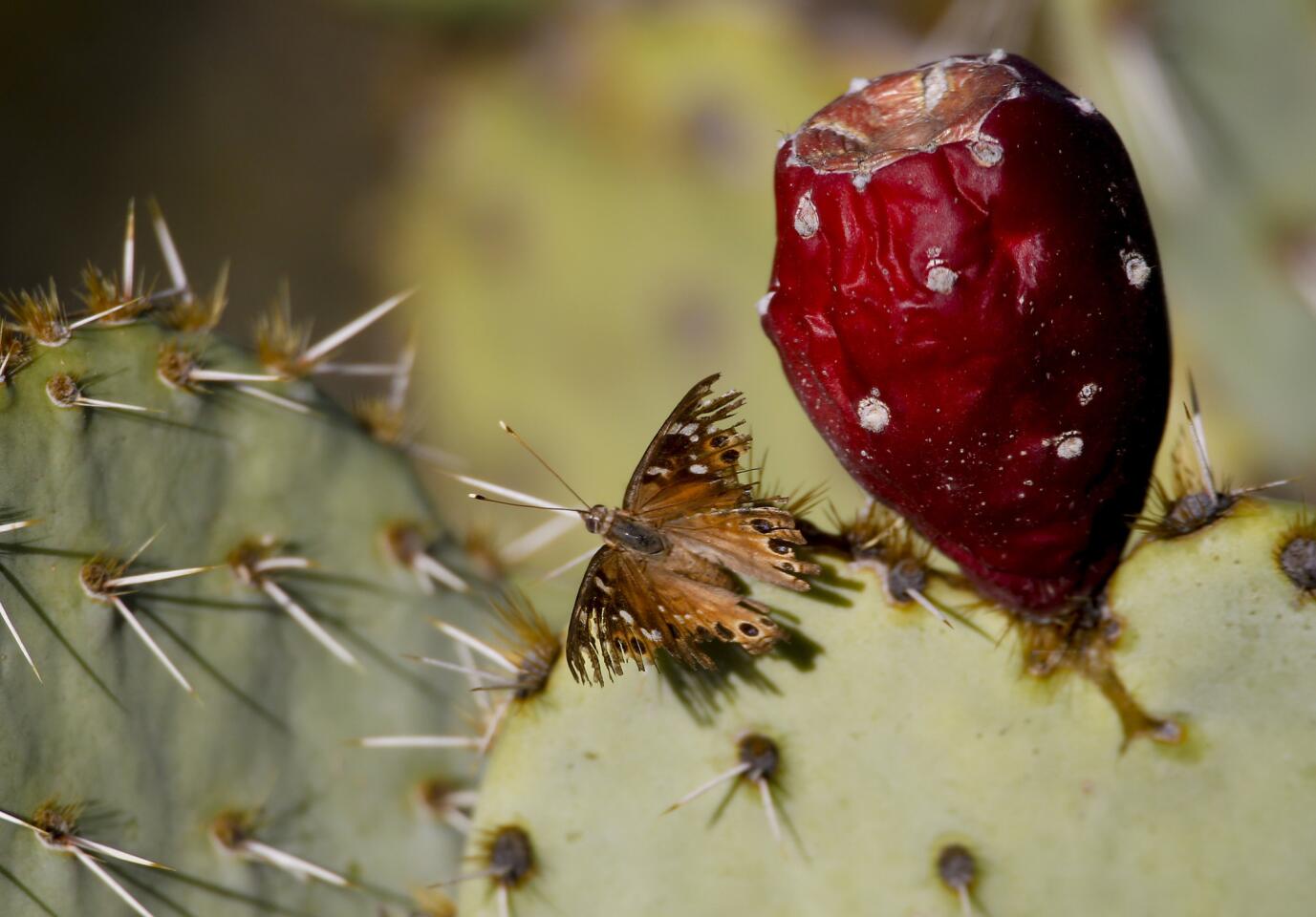
A butterfly lands on a prickly pear cactus.
(Mark Boster / Los Angeles Times)Advertisement
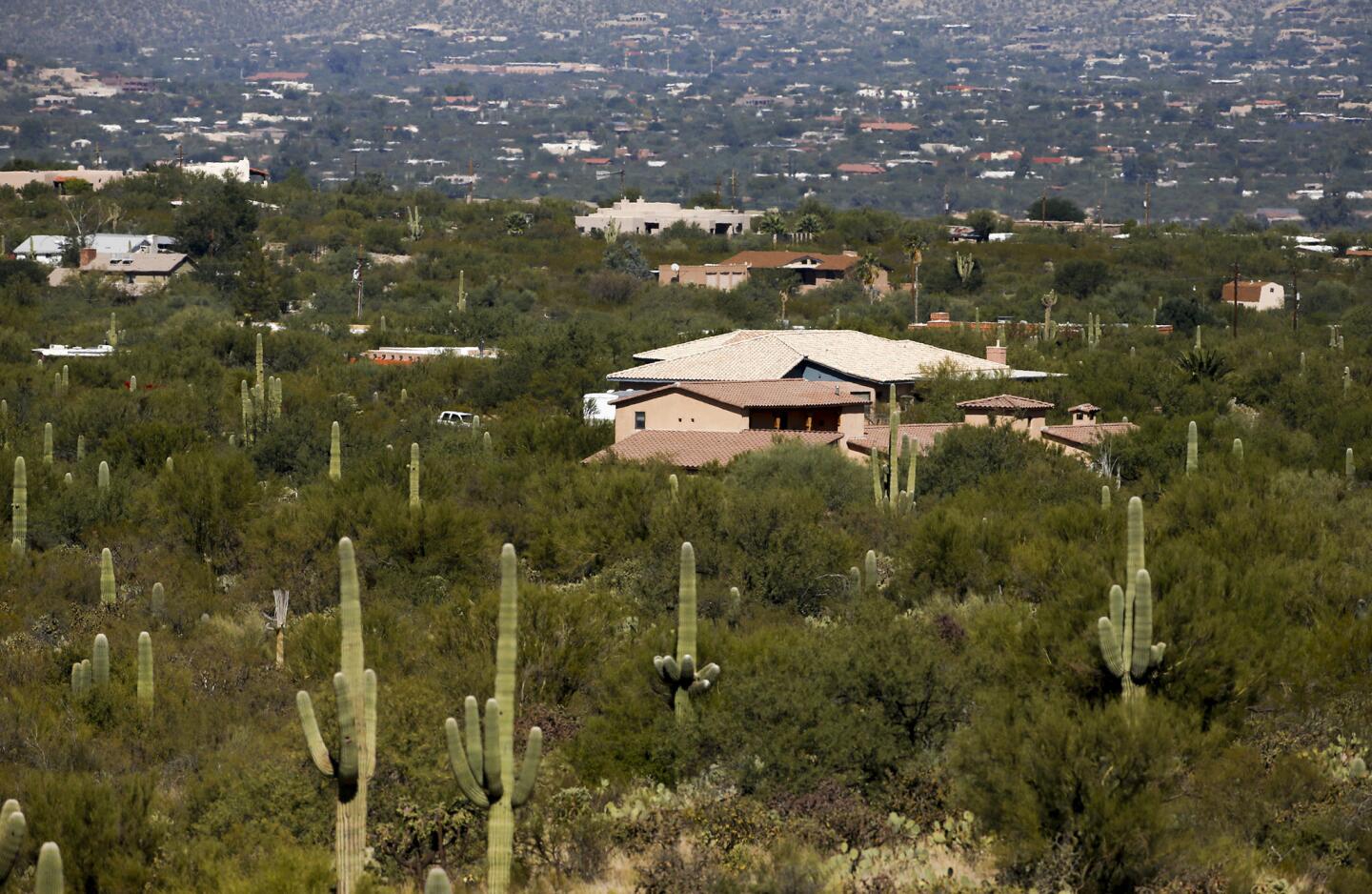
Homes in Tucson can be seen near the border of Saguaro National Park.
(Mark Boster / Los Angeles Times)


